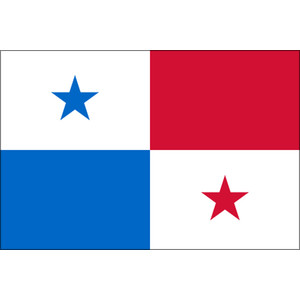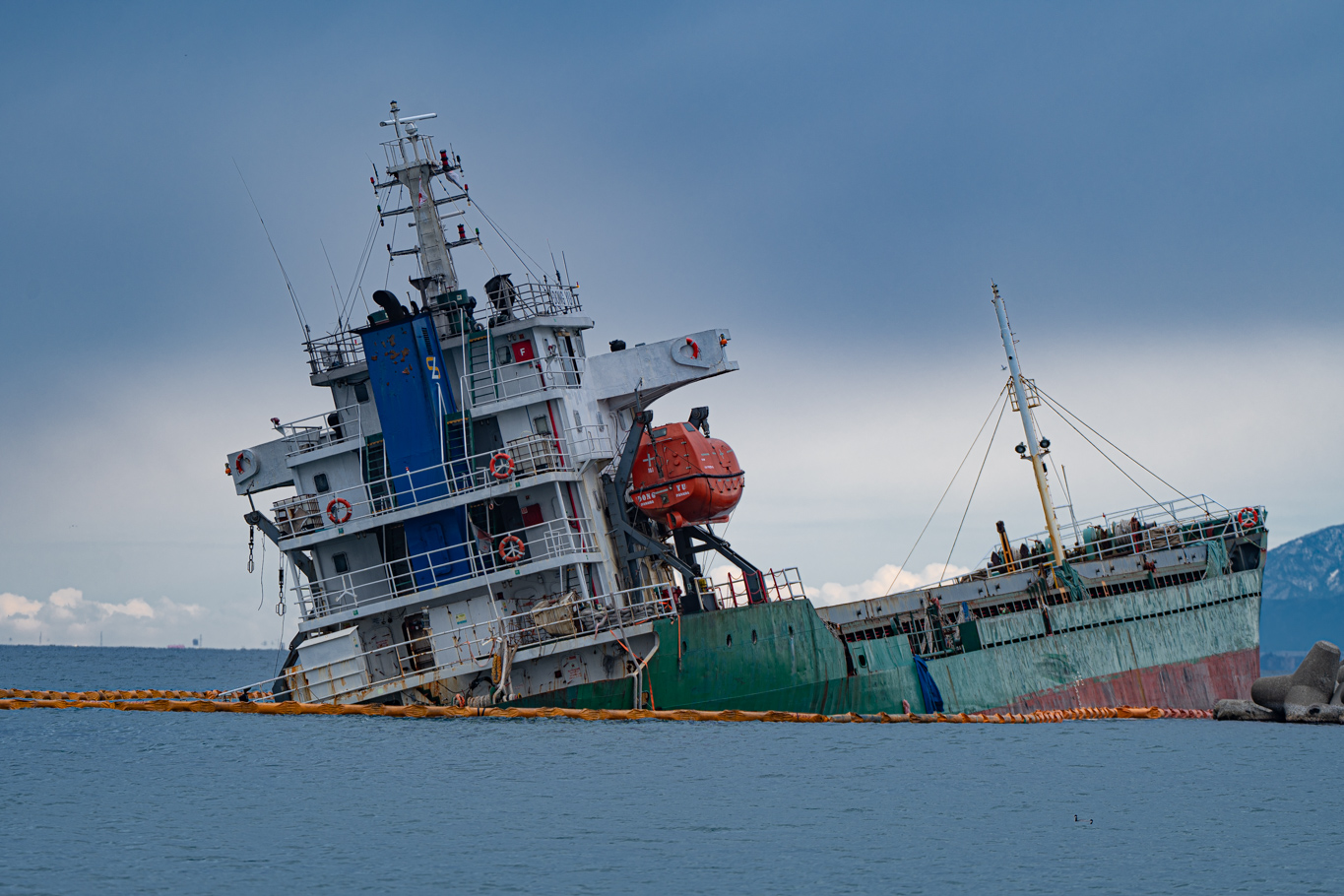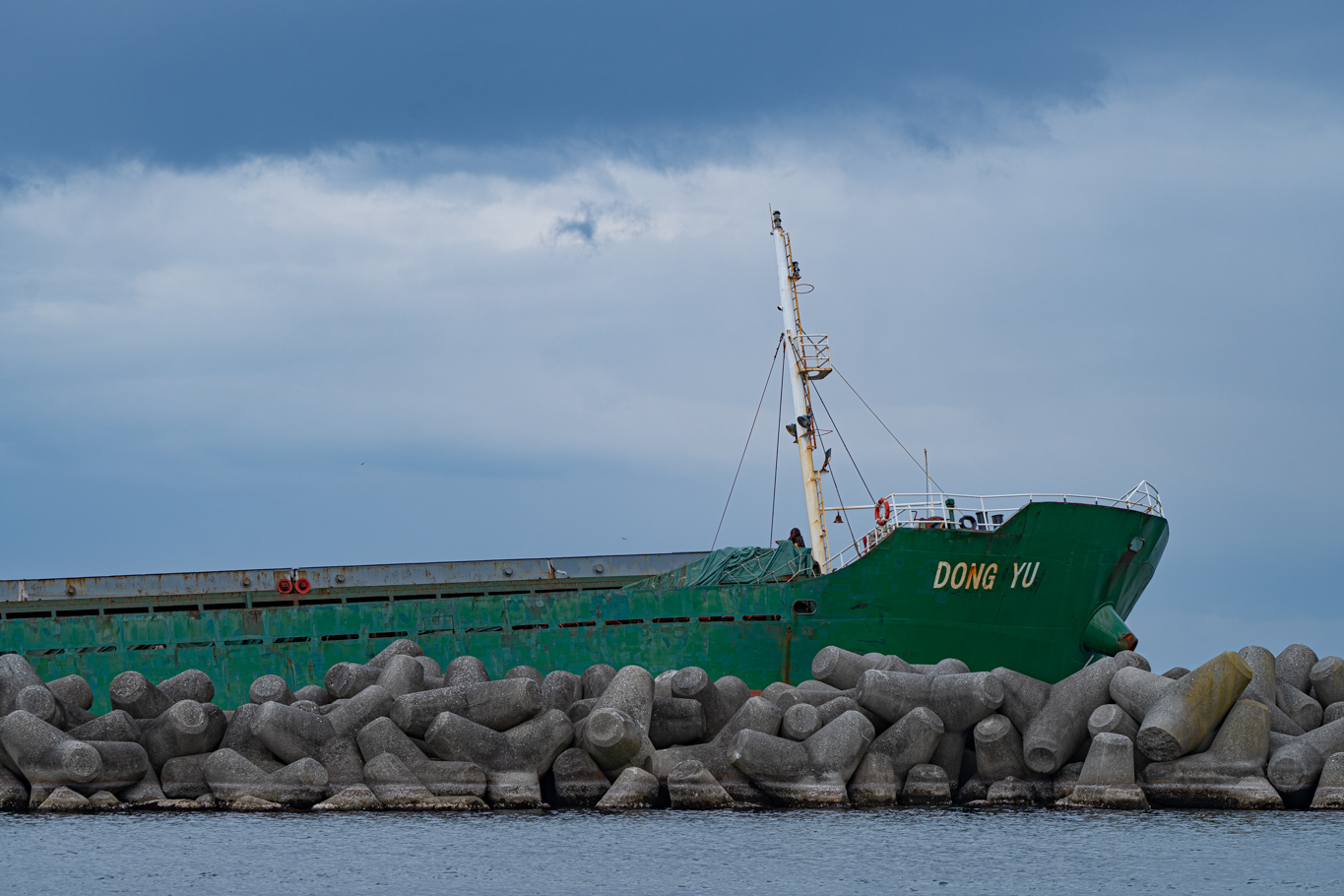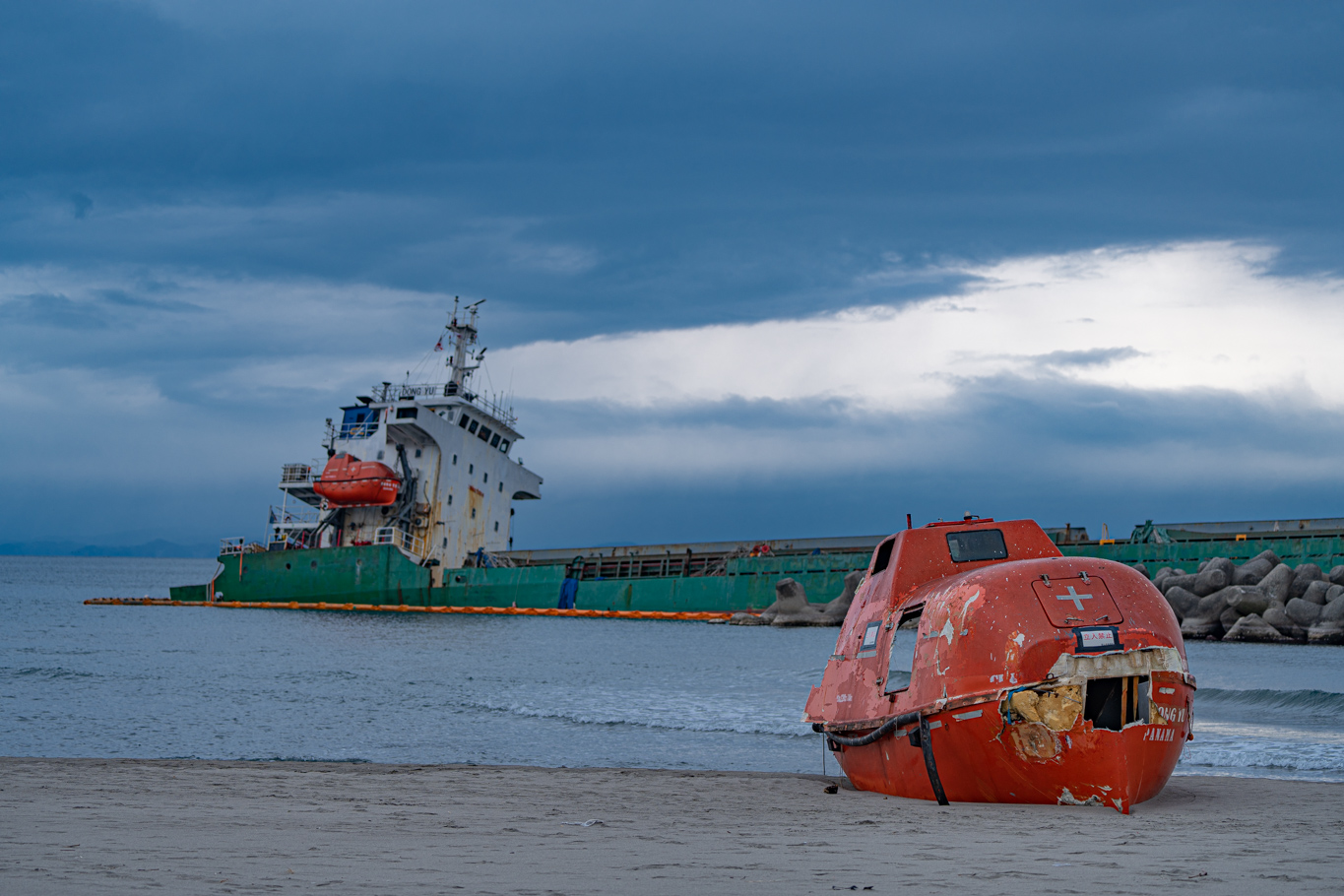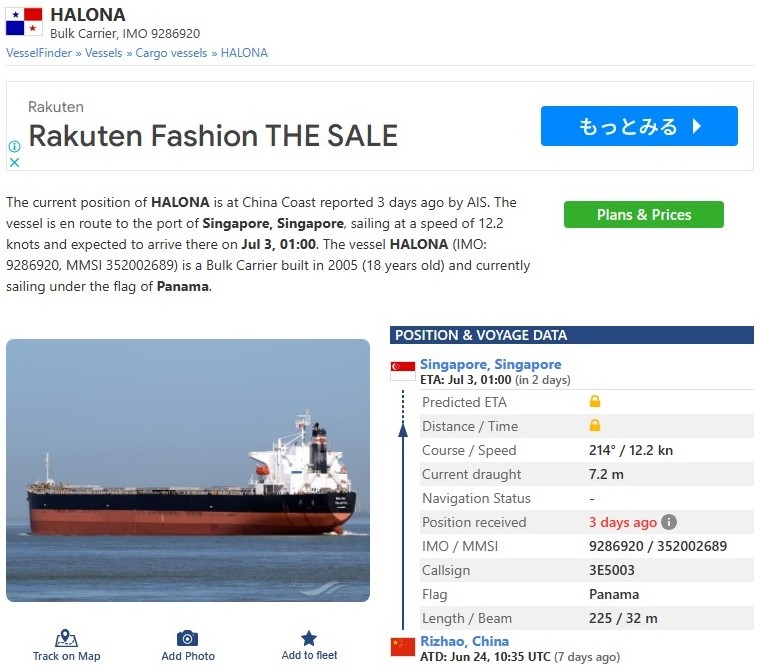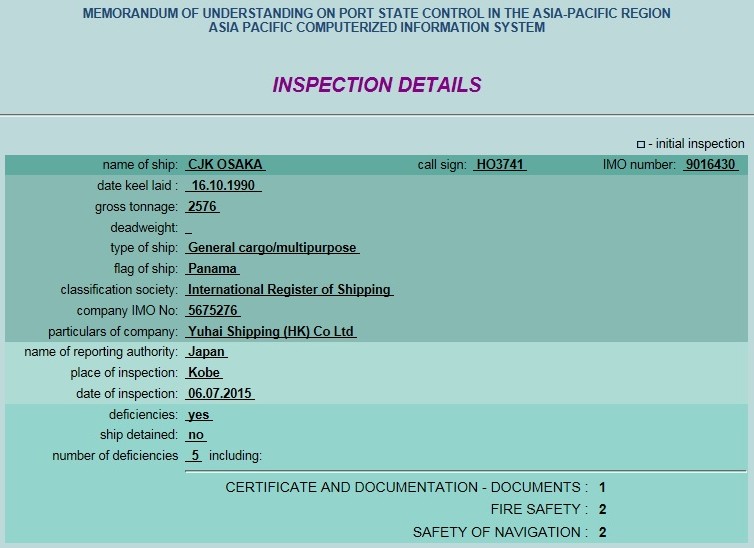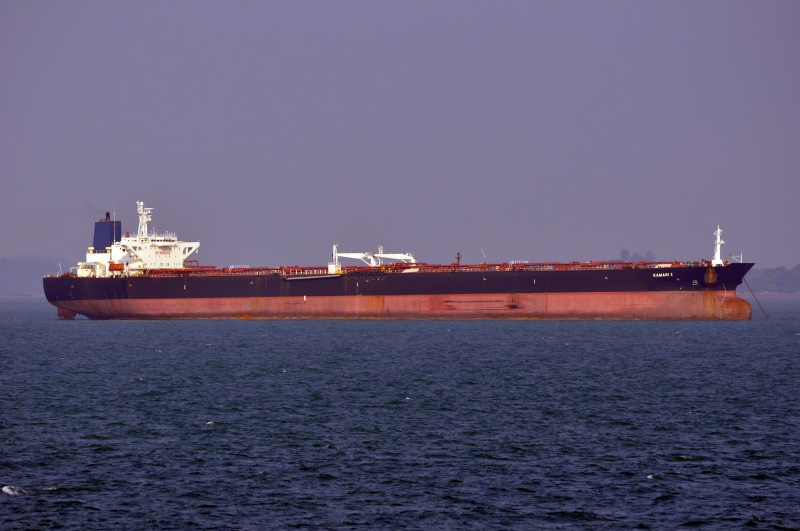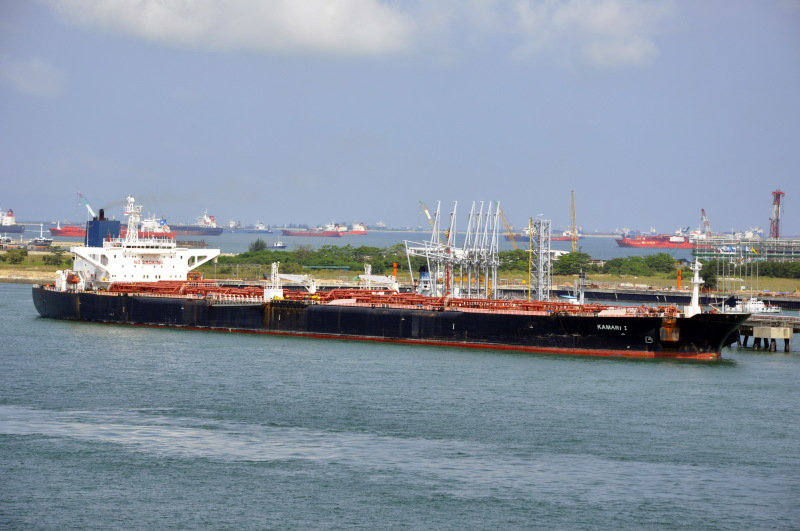サブスタンダード船を含むパナマ籍船
 パナマ船籍の「マリナ アイリス」が沈没!
◆海難情報!
◆海難2
◆海難3
◆海難4
◆海難5
◆海難6
◆海難7
◆海難8
パナマ船籍の「マリナ アイリス」が沈没!
◆海難情報!
◆海難2
◆海難3
◆海難4
◆海難5
◆海難6
◆海難7
◆海難8
処分船リスト 日本 香港 TOKYO MOU 船舶保険 ★BLUE OCEAN(ブルーオーシャン)の事故
 不適切な検査:パナマ ビューロー
不適切な検査:パナマ ビューロー
★鹿児島でまた、大型船が座礁 ★悪質な造船所 ★船員免状の偽造及び問題 ★中国から違法船続々! 問題船は週末や夜に入港する
 カンボジア籍船
カンボジア籍船
 トーゴ籍船
トーゴ籍船
 モンゴル籍船
モンゴル籍船
 シエラレオネ籍船
シエラレオネ籍船
 ツバル船籍船
ツバル船籍船
 フィジ籍船
フィジ籍船
 ベリーズ籍船
ベリーズ籍船
 ミクロネシア籍船
ミクロネシア籍船
 パナマ船籍
パナマ船籍
 カンボジア籍船の海難
カンボジア籍船の海難
 カンボジア船籍船 AN FENG 8 IMO:9365726
カンボジア船籍船 AN FENG 8 IMO:9365726
 フィリピンでの船舶による油流出事故
フィリピンでの船舶による油流出事故
 ソーラー1(Solar 1)フィリピンで沈没!
ソーラー1(Solar 1)フィリピンで沈没!
 韓国客船 Sewol沈没
韓国客船 Sewol沈没
★船舶検査不正&問題情報
サブスタンダード船排除 (社団法人日本船主協会のホームページより)
第2回パリMOU・東京MOU合同閣僚級会議の結果について (国土交通省のHPより)
(岩崎忠夫大臣政務官が代表として参加し、サブスタンダード船の排除に向けた我が国の決意を表明)
From the below table it is interesting to note that the world's top five ship registries account for over half of the world's registered deadweight tonnage.
------------------------------------------------------
RANK - REGISTRY - PERCENTAGE SHARE OF WORLD'S REGISTERED TONNAGE
1. PANAMA - 22.63 %
2. LIBERIA - 11.14 %
3. MARSHALL ISLANDS - 6.10 %
4. HONG KONG - 5.84 %
5. GREECE - 5.30 %
6. BAHAMAS - 5.02 %
7. SINGAPORE - 4.83 %
8. MALTA - 4.40 %
9. CHINA - 3.54 %
10. CYPRUS - 2.45 %
11. SOUTH KOREA - 1.63 %
12. NORWAY - 1.46 %
13. UNITED KINGDOM - 1.39 %
14. JAPAN - 1.39 %
15. GERMANY - 1.38 %
16. ITALY - 1.35 %
17. ISLE OF MAN - 1.31 %
18. INDIA - 1.17 %
19. DENMARK - 1.06 %
20. ANTIGUA AND BARBUDA - 1.02 %
21. UNITED STATES - 1.0 %
------------------------------------------------------
All other ship registries have less than 1 % of the total worldwide registered deadweight tonnage.
* As at January 2010, statistics compiled by UNCTAD Secretariat, with the assistance of IHS Fairplay. Reported in the UNCTAD Review of Maritime Transport Publication.
パナマ船籍がトップ10の船籍と明らかに違うのはサブ・スタンダード船 も多いと言う事だろう。特に総トン数1万トン未満の船舶に関してはサブ・スタンダード船 の割合が高くなり、総トン数5千トン未満となると割合がさらに高くなる。これは問題のある検査会社 が検査し、証書を発給する割合が高くなるからである。パナマ船籍サブ・スタンダード船 の質は、カンボジア籍船、 シエラレオネ籍船、そして モンゴル籍船とあまり変わりない。
まあ、個人的な経験から言えば、ISMコードで要求される安全証書が国際船級協会連合(IACS)のメンバー以外の県さ会社により発給されている場合、8割以上の確率で下記の勧告を守る事が出来ない船舶管理状態だと思う。証書が発給されているから規則を満足していると思わない方が良い。
制度や規則に抜け道があれば、それを利用する組織や会社が存在すると考えて対応しなければ、現状の改善は期待できない。
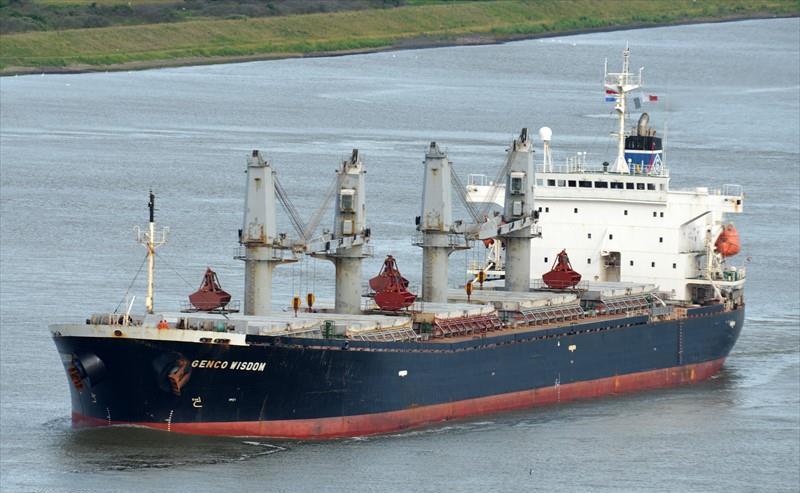
運が悪いと沖縄で座礁し真っ二つに折れた船のような海難を起こす可能性は高い。なぜなら、IACS(国際船級連合)のメンバーである検査会社でも問題はないわけではないが、それ以外の検査会社の検査はかなり酷いと思った方が良い。まともに検査できる人材はいないと思う。また、まともに検査しようと思う検査官がいれば、凄く珍しいと思う。日本のPSC(国土交通省職員)は個人的な推測だがこのような船が日本に入港しても、検査に行かない、又は、検査しても問題をみつけられない可能性は高いと思う。

この船はいつ撤去されるのだろうか?「2007年5月14日~18日、ケニヤ(ナイロビ)において64ヶ国が参加して開催され、会議最終日(18日)に「海難残骸物の除去に関する国際条約」が採択された。 我が国からは、国土交通省海事局総務課海事保安・事故保障対策室織田課長補佐その他5名が会議に出席した。」(国土交通省)とホームページに掲載されているので海難残骸物除去条約(Wreck Removal Convention)について海保職員は十分な理解があるはずだ。
1月に富山市の岩瀬浜沖でパナマ船籍の貨物船が座礁した事故で、伏木海上保安部は26日、中国籍の男性船長(46)を業務上過失往来危険容疑で書類送検したと発表した。...
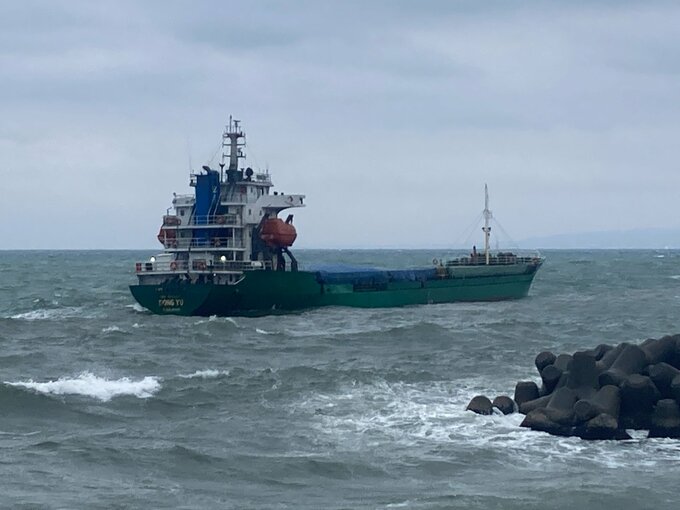
業務上過失往来危険の罪で罰金の略式命令を受けたのはパナマ船籍「DONGYU(ドン・ユ)」号の中国籍の船長の男です。
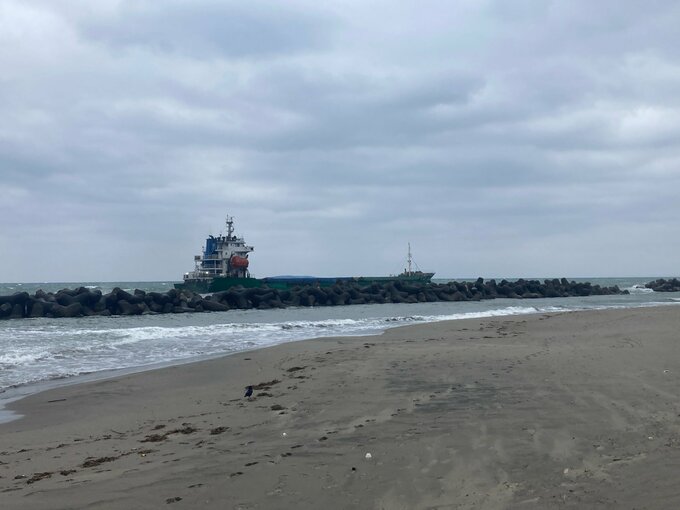
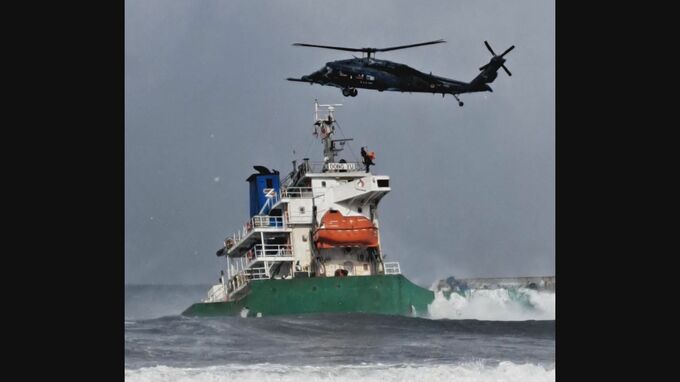
伏木海上保安部によりますと船長の男は陸に近づくにつれ徐々に浅くなっていると認識していたにも関わらず、指定時刻に間に合わせるため安全な航行を怠ったということで、男はすでに罰金を納付したということです。
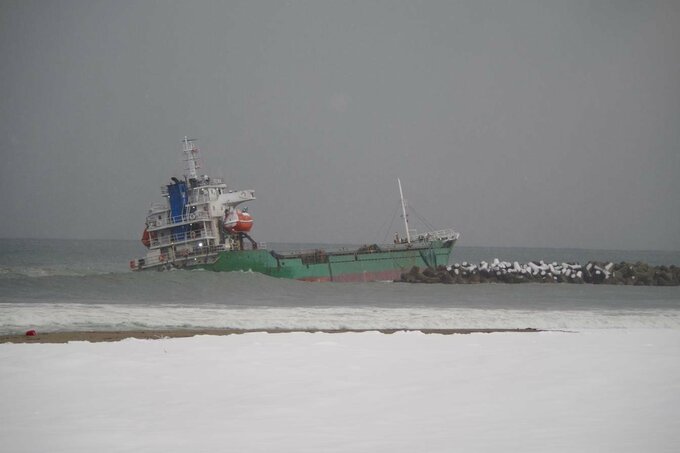
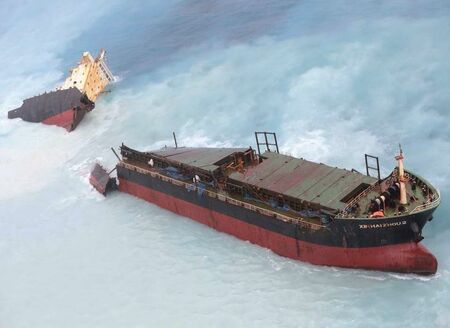
【写真】石垣島沖合でサンゴ礁に乗り上げた座礁船
石垣海上保安部の巡視船が4日朝に台風の被害状況の確認で航行していたところ、座礁船が破断しているのを見つけた。石垣市名蔵湾沿岸には座礁船の救命艇が漂着していた。油や積み荷のヤシガラなどの流出は確認されていない。
5日以降に台風が弱まり次第、業者が船体の状況や周辺海域の環境への影響を調査し、県と協議して今後の作業方針を決める。県防災危機管理課によると、座礁船の撤去作業は7月13日から開始。台風5、6号の影響で中断していた。
(写図説明)中央から破断したパナマ船籍の座礁船(第11管区海上保安本部提供)
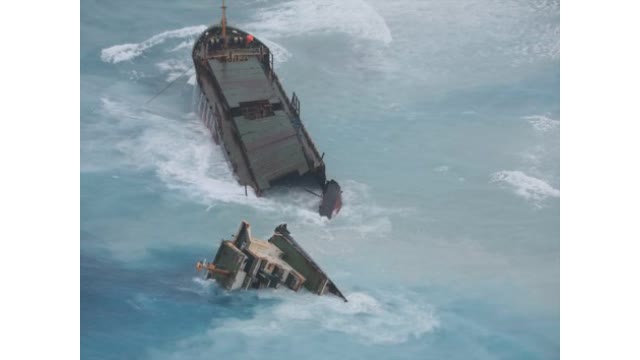
今年1月、パナマ船籍の貨物船が石垣島沖の石西礁湖で座礁し、先月から撤去に向けた作業が始まっています。
第11管区海上保安本部によりますと4日、貨物船の船体が割れているのが確認されました。
台風による強風や高波が影響したものとみられています。
付近に油の流出は確認されていませんが、貨物船に搭載されていた救命ボートなどが石垣島の名蔵湾の沿岸に漂着しているという事です。
沖縄テレビ
The Panama Ship Registry is taking action after falling 10 places in the Paris MoU list of flag states, dropping into the group’s gray list, and which could favor competitor nations such as Liberia
07/18/23 (Bloomberg Linea)
By Mary Triny Zea
Panama City-Panama,shich registers,or flags, the largest number of ships in the world, with 8,653 vessels currently in operation, will now see Panamanian-flagged ships more susceptible to inspections from this month as the country has slipped 10 places in the ranking onto the so-called'gray list' of the Paris Memorandum of Understanding on Port Sate Control(Paris Mou).
Paris MoU is a group of European nations plus Canada which maintain data on vessel inspections and rank flag states based on the ratio of detentions to inspections. The data underpinning the rankings is on a three- year rolling basis, with the latest list covering inspections and detentions from 2020-2022. The new list comes into force in July.
Analysts warn that the drop in Panama's standing makes it vulnerable to competition from oether nations.
The country dropped 10 positions on the Paris MoU list, an assessment valid from July 2023 to Jun 2024 that "calculates the rist profile of ships" and classifies them in white, gray and black, by the organization formed by 27 maritime administrations and covering the waters of European coastal state and the North Atlantic basin, from North America to Europe.
Its mission, according to its website, is eliminate the operation of substandard ships through a harmonized system of port state control and that the responsibility fro compliance with international maritime standdards lies with the flag state.
The consequences
Associations and lawyers linked to the maritime sector warn that the canal country has not realized the serious implications of the devaluation to the gray flag with 17 other nations and the fact that it will prresent itself with this new qualification to an audit of the International Maritime Organization (IMO) due in 2024.
Panama has abandoned the gray list 12 years ago and has since held the white flag, where, on the other hand, competitors of the free registry such as Liberia and the Marshall Islands remain.・・・
ことし1月に竹富町の浜島沖で座礁した、パナマ船籍の貨物船の撤去に関する説明会が石垣市で開かれ、撤去作業が今週から始まることなどが報告されました。
【写真を見る】5か月座礁したままのパナマ国籍の貨物船 ようやく撤去スケジュール決まる 作業期間は半年以上の見通し
ことし1月、パナマ船籍の中国の貨物船が石垣島と西表島の間にある国立公園のサンゴ礁海域で強風にあおられて座礁し、5か月が経った今も座礁したままとなっています。
その間、船体の一部に穴が空き、積み荷のヤシガラが流れ出して周辺の海底に堆積していて、環境への影響が懸念されることから、石垣市と竹富町が県などへ船の撤去を求めていました。
7月10日の説明会は県が開いたもので、撤去を行う業者が決まったことから、関係者を集めて今後のスケジュールや作業方法が説明されました。
撤去作業は船のおよそ3分の2にあたる船首部分は浮かせて移動させ、残り3分の1の船尾部分はその場で解体し少しづつ運ぶ予定ですが、アスベストが使われていてる部分がありマニュアルに沿って解体するとしています。
作業は今週半ばから始まり来年2月ごろまでかかる予定で、作業期間中は座礁船の周囲200メートル内での航行を自粛するよう呼びかけています。
琉球放送
県は10日、ことし1月に竹富町浜島沖で座礁したパナマ籍船「シンハイズー2」(長さ140㍍、総㌧数8000㌧)の撤去計画に関し、13日から本格的に作業工程に入る方針を明らかにした。作業は日本サルヴェージ㈱などに委託し、来年2月ごろまでの作業完了を目指す。
同日、八重山合同庁舎で「撤去に関する説明会」を開き、関係機関が出席。冒頭のみ報道陣に公開され、終了後に県の担当者などが取材に応じた。
説明会では、サルヴェージ社側から撤去方法や工程についての説明があったという。県によると、船体中央の「3番船倉」などに損傷が見られ、積荷の多くが流出した。
県防災危機管理課の山里永悟課長は「亀裂が広がるのを防ぐのは難しい。地元業者とも連携して積荷の回収を図るとともに、波が落ち着いている間に作業を進める必要がある」と指摘。船を軽量化するため、残っている搭載貨物を撤去し石垣港まで運んだ上で、12月までに船尾部、来年1月までに船首部の撤去を目指すとした。
船から汚染物質が漏れていた場合は、「平行して除去作業を行う」と述べた。
一方でサルヴェージ社側は、波の状況などにより「(作業が)予定より前に終わることもあれば、遅れることもある。変更は多々あると認識してほしい」と理解を求めた。
環境面への配慮については「環境省とも調整しながら、周辺のサンゴ礁に影響が出ないよう工事を進める。船尾部の再資源化も目指す」と説明した。
また、県は作業中、船の半径200㍍地点にブイを設置すると明らかにし、ダイバーや船舶はブイの内部に入らないよう呼び掛けた。
貨物船は1月24日、石垣島に向かう途中で座礁。中国人の乗組員19人は救助されたが、船体は残ったままになっており、石垣市と竹富町は早期撤去を求めていた。
県によると、撤去作業にかかる費用は船会社側が負担するという。
Lloyd's Register - Fairplay - のHPより
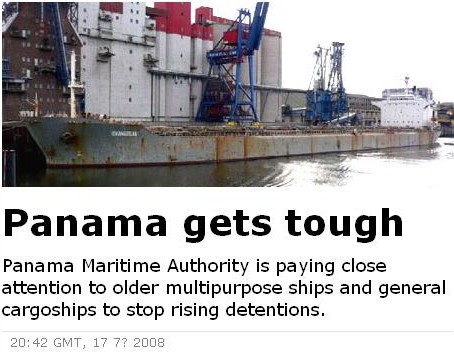
Lloyd's Register - Fairplay - のHPより
パナマ政府が承認している検査会社を監査し、IMOの基準を満たしていなければ 承認を取り消すそうである。

− O号のISM証書問題に関する論争を経てパナマ政府は
検査代行機関をどのように監督するかという難しい問題に直面している −
(2001年7月31日付ロイズリストより)
--------------------------------------------------------------------------------
パナマ海事局は、O号事件の再発を防ごうと、世界各地の公認検査代行機関を監査しようとしている。 英国のドーバー港でクルーズ船O号が拘束検挙されたことにより、パナマの検査代行機関が野放しでろくに監督されていないという事実を白日の下にさらす結果となった。
O号はパナマ海事局が公認したPanama Register Corporationという会社が発行したISM証書を所持していた。ISM証書を発行する権限を有する公認代行機関として、ウェブサイトに掲載されているにもかかわらず、パナマ海事局は去年の4月にその権限を剥奪したと主張している。
ISM証書の発行権限があろうがなかろうが、証書は発行されるべきではなかった。品質管理プログラムでそのような過ちは防止すべきであった。
「ほとんどの船籍国は世界中に展開する全船舶を検査する能力を有してはいない。」「それゆえに、それらの船籍国は検査権限を民間会社に委託するのである。」「これらの会社が実行する検査、監督の密度は委託元の船籍国によって異なるのである。しかし、ひとつ確かなことがある。検査代行機関に対する監督は品質管理保証の一環なのである」と元パナマ海事局の職員で今は競合する船籍国の職員として働いている人が証言している。
現行の手続き体系の下では、海事局は船級協会や検査代行機関が発行した証書についての報告書及びサーベイヤーの検査報告を受け取ることとなる。その手続きはIMOの書類の中で定められている。しかし、それは常にガイドラインであって強制力のあるものではない。
今年始め、数海運国の認証印のある大量の偽造船員免状が発見されたが、これによって検査代行機関は十分な監視を受けていないのではないかとの非難がますます 高まることとなった。
フィリピンからの新聞報道によれば、マニラの2つの非公認会社が1日に200件ないし300件免状申請を処理していたという。その一つ、Maritime Services Inc.は、10%の市場シェアを持っていたといわれている。パナマ海事局長、Jerry Salazar氏は、調査団をマニラに派遣したが、既に、会社のオフィスは蛻の殻であった。
評判の良い法律事務所では、公然たる汚職というのは決して一般的なものではない。「この種の報告書は誇張されている。」とパナマのDe Castro & Robles法律事務所の海上弁護士、Cesar Escobar氏は言っている。「もし、誰かが賄賂を持って役所にやってきたら、はたして法に反する不正を犯す誘惑にかられる役人が一人もいない国があろうか?」
Escobar氏の主張によると、検査規準もまた問題である。「監督を強化すべきだ。」とEscobar氏は言った。「私たちはその圧力を強化しなければならない。パナマは海運産業にサービスを供給する立場にある。パナマは、海運業サービスが国家財政に貢献しているので、検査規準を維持することに大きな関心を持っている。」
スキャンダルがあらわになったとき、海上弁護士は依頼人に諸説明をする責任があるとEscobar氏は指摘している。 便宜置籍船の評判が落ちた場合、それは置籍船の減少という商売上の損失になって しまうのだ。このスキャンダルがパナマ海事局のイメージを著しく傷つけて以来、パナマ置籍申請の照会が50%も減少したと一人で法律事務所を経営しているRuben J. Levy弁護士は報告している。
「私は、言うべき前向きなことがないときには、船主には話しかけるのをなるべく避けることにしている。」とEscobar氏は言った。 「パナマ政府は本当に海事行政のことがわかっていないし、担当官吏は公衆がこの問題にどのくらい敏感であるかを理解していないように感じられる。海事局は混乱の極に達している。担当官吏達は、自分達がどのように大きな損害を引き起こしているかを知らない;彼等はパナマの収益源をめちゃめちゃにしているのだ。」
Escobar氏はまた、スキャンダルが白日の下にさらされたことによって、便宜置籍引受商売が顕著に減少している事実を報告している。「現在の顧客よりも将来パナマ置籍を利用している潜在的顧客に対する影響の方が大きいと考えている」と同氏は述べている。
海事法律協会の会長である、Juan Felipe Pittyは、海事局が決然とした行動をとるよう促した。 「私たちは、30日以内に徹底的な調査が行われることを期待している。」「たとえ、結果としてパナマの船舶検査行政を代行する会社やサーベイヤーの認可を取り消すということになろうとも、違反を犯した個人と法人の全員に見せしめとしての処分を期待する。」とPitty会長は言明した。
「海事当局はこれら一連のスキャンダルを便宜置籍制度を攻撃する機会を待っていた反政府勢力にそのチャンスを与える絶好の機会としてはならない。反政府勢力が舌なめずりしている様子が手にとるようにわかる。」と。
「パナマ当局とパナマ当局が監督している便宜置籍制度は多数の船籍登録を誘致するのに大成功を収めてきた。昨年この世界最大の便宜置籍制度は、実際に第二の便宜置籍国リベリアに大きく水をあけた。
「過去5年間に亘って、パナマ海事当局は繰り返しもはや便宜置籍国の悪い評判は過去のものとなった。」と強調していたが、一部の代行業者にはこのメッセージは届いていなかったようだ。
以上
<日本船主責任相互保険組合>
The Panama Ship Registry is taking action after falling 10 places in Paris MoU’s list of flag states, dropping into the group’s grey list.
06/29/23 (Seatrade Maritime)
Gary Howard
Paris MoU is a group of European nations plus Canada which maintain data on vessel inspections and rank flag states based on the ratio of detentions to inspections. The data underpinning the rankings is on a three- year rolling basis, with the latest list covering inspections and detentions from 2020-2022. The new list comes into force in July 2023.
Inclusion in the grey list denotes flags with an “acceptable levels of compliance with a low level of detention”, blow the white list of high compliance flags and above the black list of fleets with high levels of detention.
Related: Panama expels 6.5 million gt of ships linked to Iran, North Korea or sanctions
Panama vessels had 5,472 inspections over the three-year period with 366 detentions, placing it 46th on the overall list and firmly in the grey list which covers places 40-57. For the number of inspections, Panama would have needed 351 detentions to make the white list and 415 to drop to the black list. Panama is by far the largest flag state in the grey list.
Last year, Panama made the white list and was in 36th place overall.
Related: Panama Ship Registry attains US Coast Guard Qualship 21 status
The Panama Ship Registry said it has taken steps to improve its compliance and offered some explanation for its ranking drop. The legacy fleet operating within the Paris MoU region is a factor, it said, with 104 of its detained vessels over 30 years old.
“These vessels are being subjected to a special inspection regime, and if they do not improve, they will be removed from the register,” said Panama Ship Registry.
“A trend was detected of ships certified by Recognized Organizations with a high number of detentions or reported deficiencies and having valid technical certification on board, without prior notification to the Directorate General of Merchant Marine (Ship Registry). These companies have been audited, some suspended and revocation of their delegation of authority is not ruled out,” said the registry.
It also said that the pandemic lead to increased bankruptcies and vessel abandonments, and pointed the finger back at flag state inspectors, who in some cases carried out remote inspections “acting independently and without the authorization of the AMP’s Directorate General of Merchant Marine.”
The registry said it has taken action to boost its compliance standards, including rejecting vessels over 30 years of age, sanctioning and cancelling non-compliant vessels, sanctioning and cancelling flag state inspectors, and purging the register.
By: The Maritime Executive
Panama has released new details of its program to clean up its fleet, including efforts to bring up the quality standards of its recognized organizations and inspectors.
Prompted by the downgrading of its flag to the "gray list" of the Paris MOU, Panama has embarked on a mission to improve its port state control performance, and it has described the effort as a "paramount issue." The changes include tightening scrutiny of new applicants to the flag, attracting more newly-built ships, rejecting ships over 30 years of age, evaluating the quality of older legacy tonnage, and high-grading the fleet, as announced last week. Panama is also taking the step of cracking down on sanctions-busting and illegal fishing.
But in a new statement released Wednesday, the Panama Maritime Authority added that it is going a step beyond the examination of its clients and their tonnage. It is also looking closely at the quality of oversight provided by its recognized organizations and inspectors.
According to the flag administration, it has picked up a trend of high levels of deficiencies and detentions for ships with valid documents from certain ROs. Panama has audited these ROs, and some have been suspended. Revocation of their status is a possibility going forward.
Panama has also picked up on issues with flag state inspections carried out by some of its approved inspectors. In some of these cases, the inspector never attended the ship and carried out the task remotely, without approval from the flag state. So far, Panama has suspended three inspectors for poor performance, and 14 more are in the process of suspension. An additional nine have been canceled from the approved inspection list altogether.
By: The Maritime Executive
The Panama Maritime Authority reports it is taking steps to increase its enforcement and remove ships from the registry that are failing to uphold standards or are involved in illegal activities or operations related to sanctions.
They said while efforts have been postponed in the past, including while there were updates to the Merchant Marine law, the registry is committed to moving forward to improve international compliance.
The Panama Ship Registry reports it is working on an integrated review of the verification and control of the more than 8,500 vessels that make up the Panamanian fleet and the more than 318,000 active seafarers. According to data from Clarksons Research, Panama added nearly 30 million gross tons to its registry since July 2019. As the largest shipping registry, they estimate on average the Panamanian fleet is inspected 14,000 times a year.
“The Panama Maritime Authority considers the international compliance of the Panama-flagged fleet of utmost importance and to enforce it,” the authority said in its statement reporting that it looks at the age of vessels, detention, and safety inspection history, together with statutory and classification inspection and certification history. The purging process began in 2021 and continues with a review of elements including vessels with a compromised history and detention reports.
The efforts come as there has been an increased global focus on the practices of ship owners and operators. Globally there have been efforts to improve safety and crackdown on the growing shadow fleet.
According to Panama, under the Merchant Marine law, they cite a list of reasons for which a ship can be removed from the registry. These range from non-compliance with regulations including maritime safety, pollution prevention, maritime security or international conventions, as well expiration of navigation documents that have not been renewed within five years. They also list smuggling, illicit or clandestine trade, piracy, and other crimes along with presenting or having forged or falsified documents. A high incidence of detentions due to serious or recurring deficiencies as well as being in multiple registries are also grounds for removal from the Panama registry.
Another revision that they are undertaking to the Merchant Marine Law is the proposal to add illegal fishing to the reasons for removal. They highlighted that a provision is being added for information that vessels are active in illegal, unreported, and unregulated fishing.
The report highlights that 182 vessels involved in fishing representing over 475,000 gross tons have already been cited for invalid fishing licenses or expired documentation. Another 97 vessels totaling more than 59,000 gross tons are currently in the process of having their registries canceled for similar reasons.
Panama is participating for the first time in the U.S. Coast Guard’s Qualship 21 Program, an initiative to identify high-quality ships and provide incentives to encourage quality operations. The USCG launched the program in 2001 to eliminate substandard shipping by focusing on improving methods to identify poor-quality vessels. Panama says as part of its participation it has put in place a series of measures ensuring the reduction of possible detention of Panama-flagged ships at U.S. ports.
The Panama Maritime Authority reports it has canceled more than 6.5 million gross tons of shipping since July 2021, for issues related to Iran, North Korea, or vessels included in the list of international sanctions. While efforts had been previously postponed, they said they are committed to
Reuters
PANAMA CITY, June 27 (Reuters)- The Panama Maritime Authority (AMP) said on Tuesday it would continue to clean up its fleet to prevent substandard Panama-flagged ships from being detained in foreign ports, a week after the country was added to an international watch list.
Panama’s ships registry was last week added to the “grey list” of the Paris Memorandum of Understanding (MOU), an agreement among 27 countries establishing an international inspection regime for foreign ships in other nations’ ports, aiming to control ships’ safety and environmental standards.
The grey list includes fleets with acceptable compliance levels but low detention rates.
Panama has removed 216 vessels from its ships registry, the world’s largest, since 2021, for not meeting international standards.
In a statement, the AMP said that Panama’s registry, which numbers at some 8,500 vessels, had been inspected at least 45,000 times, giving “an overall fleet compliance level of 96.17% and a detention rate of 3.83% downward.”
Panama’s inclusion on the watch list could be due to an aging fleet, the AMP said, noting that of 374 detentions reported in the last three years, 104 of the detentions involved ships more than 30 years old and 35 were of ships over 40 years old.
(Reporting by Elida Moreno; Writing by Sarah Morland; Editing by Stephen Coates)
Maritime authority says it expelled unspecified number of vessels amid concerns about DPRK’s use of flags of convenience
Anton Sokolin
Panama has revoked registrations for an unspecified number of ships flying its flag over potential links to North Korea and international sanctions violations, the country’s ship registry has announced.
From July 2019 to date, Panama “has canceled ex officio more than 6.5 million gross register tons (GRT) [of ships] over matters related to Iran, North Korea or [vessels] that have been included in the list of international penalties,” the Panama Maritime Authority announced in a statement last week.
The agency did not specify the total number of revoked vessel registrations and did not elaborate on specific reasons for the delistings. But the move appears to be part of efforts to curtain sanctions-busting by North Korean ships, which frequently sail under various flags of convenience — including the Panamanian flag — to conceal illicit activities like ship-to-ship (STS) transfers.
The Panama Maritime Authority states that the move to expel the ships is in line with its “depuration program” launched in 2021, which aims to clean its register of “ships with a compromised history” and “reported detentions,” fishing vessels involved in “undeclared and unregulated fishing” and “ships that maintain low international compliance.”
“The Merchant Marine may penalize the shipowners and the master with the expulsion of the ship when the image and the good name of the Panamanian Merchant Registry are damaged,” the statement reads.
GRT is a now little-used measure of the overall internal volume of a vessel.
The registry’s website lists 8,653 Panama-flagged ships with a total tonnage of 249.3 million GRTs and more than 317,000 active crew on those ships. Panama is one of the most commonly used flags of convenience globally.
Despite revoking registrations, Panama said its registry had 29.6 million GRTs added to its fleet between July 2019 and May 2023, citing data from Clarksons Research.
DPRK’s deceptive techniques, including tampering with ships’ identification information and switching off vessels’ transponders, have long been on the radar of Panamanian authorities.
The Panama Maritime Authority previously warned potential offenders that such actions would immediately trigger a “prompt investigation” in Feb. 2018. At the time, the agency also advised that “Panama-flagged vessels are prohibited from loading cargo in North Korea” and “carrying out any STS transfers” with DPRK vessels.
In 2020, the maritime authority announced that it would sanction all Panama-flagged vessels known to alter their Long Range Identification and Tracking Systems or Automatic Identification Systems by imposing such penalties as registry cancellation, de-flagging and fines.
Edited by Bryan Betts
The 76,000-dwt panamax Xin Feng (built 2005) :IMO 9286920がパリMOUエリアが出港停止命令を受けたが修理を拒否して入港禁止となった。当時はリベリア船籍であったがパナマ船籍に変更して船名も「HALONA」に変えて運航されている。日本のSanoyas Mizushima Works & Shipyardで建造されているから元々は悪い船ではないと思うが曰くつきの船になってしまった。
The Xin Feng barred from Paris MOU ports after failing to get deficiencies fixed in China 03/03/23 (TradeWinds)
By Gary Dixon
France has banned a Chinese bulk carrier that failed to get a number of deficiencies fixed in its home country.
The 76,000-dwt panamax Xin Feng (built 2005) has been refused access to the Paris Memorandum of Understanding on Port State Control region.
The Paris MOU said the ship was detained in Nantes on 6 January after safety inspectors found seven deficiencies.
All were grounds for detention and included invalid certificates for construction safety, load lines and safety equipment.
Life-saving equipment was not properly maintained and two unspecified faults were identified with structural condition.
This was its first ever detention. The vessel was released but failed to call at the repair yard in China as agreed.
AIS data shows the bulker left Vlissingen in the Netherlands on 23 January bound for Zhoushan in China, with an arrival date of 20 March.
But the last update was from 13 February with the vessel in the Bay of Biscay.
The Liberia-flagged ship is classed by Nippon Kaiji Kyokai in Japan.
The operator is listed as South Ocean Marine Group of Fujian. The company could not be contacted for comment.
Cargo ship banned after three strikes
The Paris MOU also said the 3,000-dwt general cargo ship NS Sprinter (built 1992) has been banned for three months after failing three checks in two years.
The Belize-flagged vessel was held in Licata, Italy, for five days in February with 13 deficiencies.
Inspectors found expired life boats in a broken container, problems with fire-fighting equipment, improperly maintained sanitary facilities and damaged catwalk railings.
The NS Sprinter was also detained in Italy and Spain last year.
Oslo Shipholding of Tirana, Albania, is listed as the operator.
下記の記事はPanama Maritime Documentation Services (PMDS)と呼ばれるパナマから承認されている検査会社と検査官達の不正である。また、International Maritime Survey Association (IMSA)と呼ばれるモンゴルから承認されている検査会社と検査官の不正に関して書かれている。記事は北朝鮮、又は、北朝鮮に関与している船に関して証書を発給している事だけに言及している。
PSC(ポート・ステート・コントロール;国土交通省職員や国土交通省がどこまで情報を持っているのか知らないが、これらの検査会社は北朝鮮、又は、北朝鮮に関与している船に関して証書を発給している問題だけでなく、国際条約を満足していないサブスタンダード船に対して、船が運航できる証書を発給している問題がある。最近、ビックモーターの問題が注目を浴びているが、もし、国交省がPanama Maritime Documentation Services (PMDS)が検査したサブスタンダード船に対する検査程度の調査しかしなければ、甘い対応で終わりであろう。残念だが、個人的にはPSC(ポート・ステート・コントロール;国土交通省職員の検査は甘いと思う。また、検査する船や検査する項目が的外れだと思う。本当の意味での取り締まりであれば、問題があると思われる船に絞るべきだと思う。良い船を検査して、検査官の数が足りないから全ての船を検査できないとか言っているのであれば、本当にあんぽんたんか、やる気がないと思う。
PSC(ポート・ステート・コントロール;国土交通省職員の検査が甘いと、たくさんのサブスタンダード船が日本に入港するので、入港及び出港の過程で事故を起こす可能性はある。そして、放置される可能性はある。放置されると日本国民の税金で撤去される事となる。
by The Editorial Team
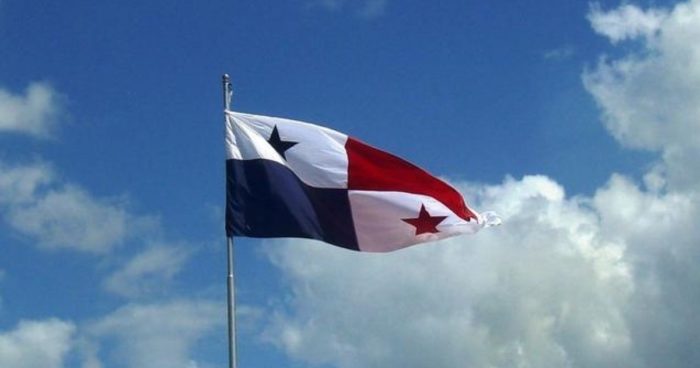
In addition, the report resulted to the fact that Chinese nationals with close links to North Korea’s illicit shipping networks have acted as surveyors for vessels registered under the Panamanian flag, and possibly the Mongolian flag, thereby potentially providing an avenue for North Korean-linked vessels to obtain flags of convenience and other maritime services prohibited under UN Security Council resolutions.

Moreover, a number of Chinese nationals with extensive links to North Korea’s illicit shipping fleet have acted as vessel surveyors for Recognized Organizations such as Panama Maritime Documentation Services and even operated their own classification agency named the International Marine Survey Association.
The report highlights that
Several links between these entities and individuals such as shared emails, phone numbers and addresses also suggest that Fan, Dong, Zhang and the companies and organisations they operate are much more closely connected than may at first appear on the surface.
In conclusion, James Byrne, the report’s researcher, resulted to the fact that Fan’s, Dong’s and Zhang’s employment with, and operation of, Recognized Organizations and Classification Societies may therefore help explain how some North Korean-linked vessels have been able to avoid scrutiny and continue operation as foreign-flagged vessels.
Sam Chambers
The world’s largest shipping registry has been embroiled in a scandal involving sanctions-busting North Korea.
A 27-page report from the Royal United Services Institute (RUSI), a UK security think tank, highlights how three individuals from the Chinese port city of Dalian have been working for entities entrusted by both the Panamanian and Mongolian flags to survey ships and authorise certificates, including for a number of North Korean-linked vessels.
The three men – Fan Mintian, Dong Changqing, and Zhang Qiao – stand accused of helping the Kim Jong Un regime flout sanctions.
RUSI found that Fan and Dong have worked as surveyors for an organisation authorised by Panama called Panama Maritime Documentation Services (PMDS), and have provided various certificates to North Korean-linked ships.
Fan and Dong were embroiled in an earlier North Korean illegal shipping incident when the vessel Light, managed by their company Dalian Sea Star Ship Technology, was “suspected of transporting North Korean missile technology to Myanmar”.
PMDS was also found to share an address and other contact details in Dalian, a city located near the North Korean border, with Fan and Dong’s companies, as well as another surveyor authorised by Mongolia called International Maritime Survey Association (IMSA), established by Zhang Qiao.
The report concluded that the business connections provided by the three men from Dalian could provide “an avenue for North Korean-linked vessels to obtain flags of convenience and other maritime services prohibited under UN Security Council resolutions.”
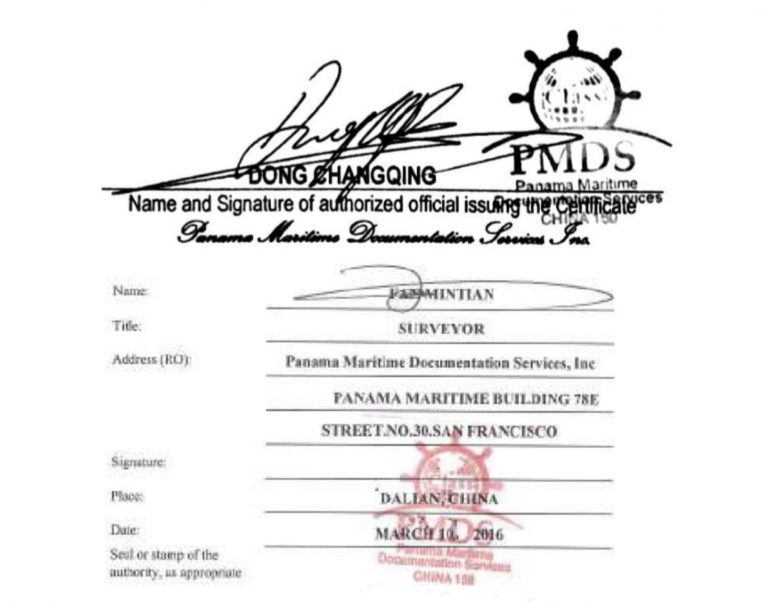
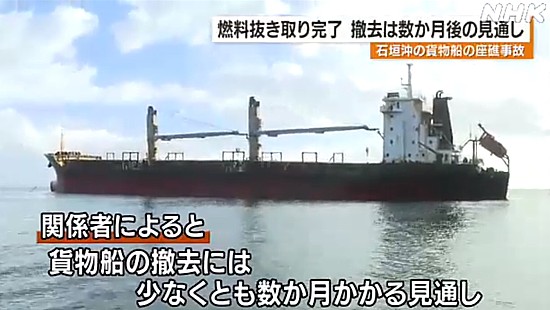
先月、石垣島沖合の国内最大のサンゴ礁が広がる海域で中国の貨物船が座礁する事故が起きました。 関係者によりますと、貨物船の燃料の抜き取り作業は完了しましたが、船の撤去には少なくとも数か月はかかる見通しだということです。 国内最大のサンゴ礁海域で国立公園に指定されている「石西礁湖」では、先月24日にパナマ船籍の中国の貨物船「シンハイズー2」(8461トン)が座礁する事故が起きました。 貨物船は船首や機関室などが浸水し、船体の一部に亀裂が入りましたが、燃料の重油の流出はなく、先月31日からサルベージ会社の船が貨物船から重油を抜き取る作業を行っていました。 関係者によりますと、19日までに抜き取り作業は完了したということです。 関係者によりますと、今後は、およそ9000トンある積み荷のウッドチップの状態を確認し、運び出す方法について検討を進めるということです。 ただ、積み荷を運び出し、座礁した貨物船を撤去するには、少なくとも数か月はかかる見通しだということです。
撤去の費用やサンゴ礁に被害が出ているのなら、サンゴ礁の復旧費用など、船の保険会社とある程度の話は付いているのだろうか?このような話は海保しか対応できないと思うので、ニュースにならないのかな?
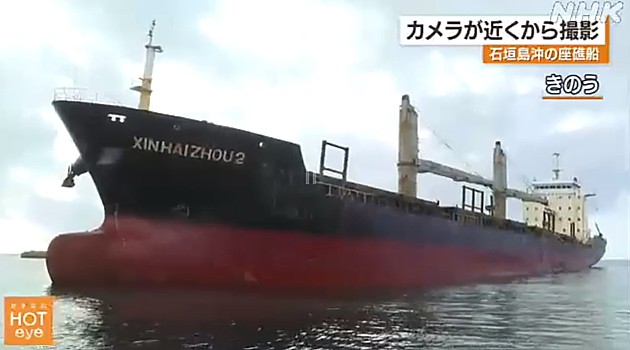
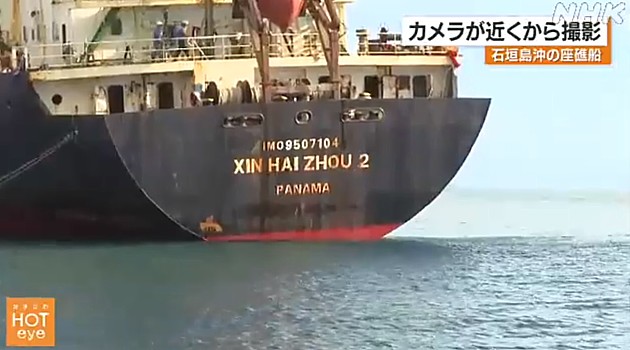
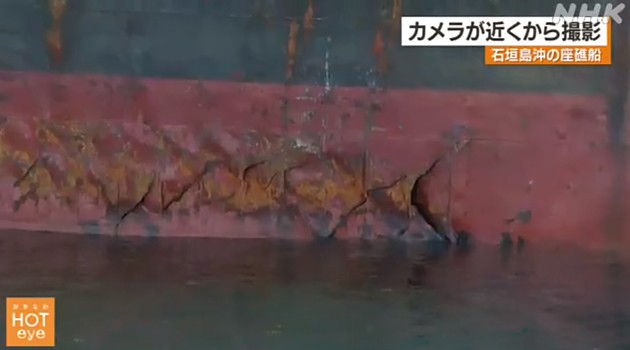
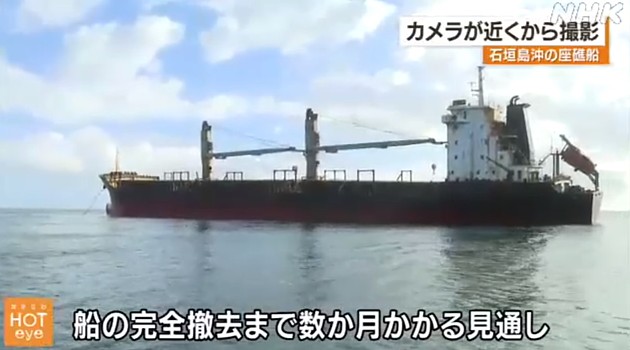
先月24日に石垣島と小浜島の間の国内最大のサンゴ礁「石西礁湖」で中国の貨物船が座礁した事故から14日で3週間たちましたが、C重油と呼ばれる粘りけが強い燃料の抜き取り作業がいまだに続けられています。
13日NHKのカメラが貨物船に近づいて様子を撮影したところ、船体は完全にサンゴ礁に乗り上げて斜めに傾き船体側面の外板が波打つようにゆがんでいました。
特に船体中央の側面は削れたような傷がつき、穴が空いている部分もあり、海水が出入りしているのが確認できました。
このほか甲板にある手すりや金属製の部品が折れて曲がっている様子も確認できました。
船の周囲では重油の抜き取りを続けているサルベージ会社の船が作業を続けている様子も見られました。
貨物船は、燃料の抜き取りを終えたあとは、貨物として運んでいたウッドチップおよそ9000トンを降ろす必要があり、船が完全に撤去されるまでには数か月かかる見通しです。
関係者によりますと、貨物船の燃料のC重油の回収は13日の段階で全体の9割まで進んでいて、今週中には完了する見通しだということです。
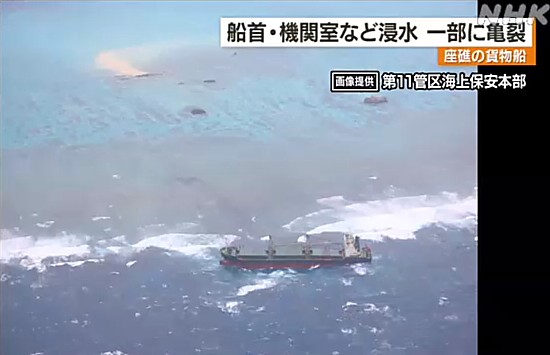
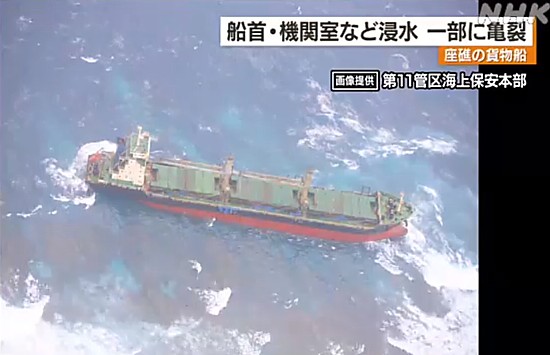
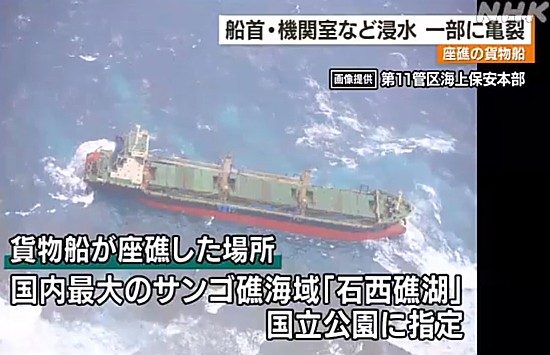
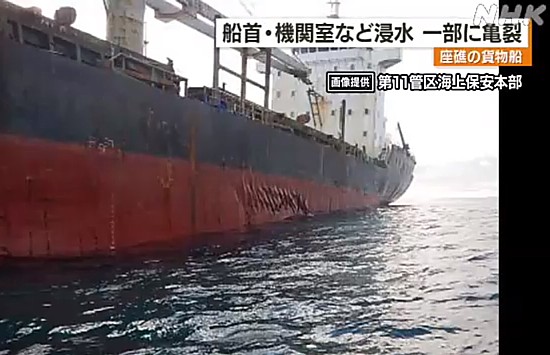
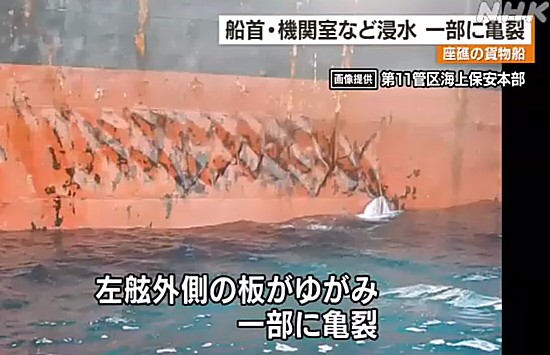
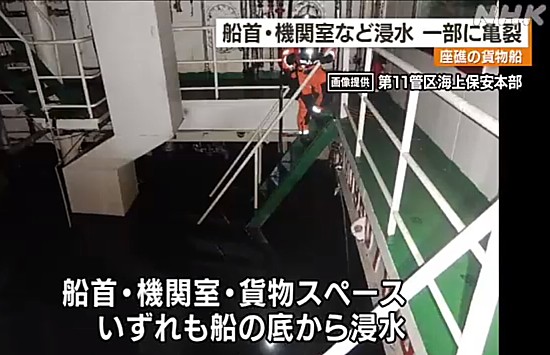
第11管区海上保安本部によりますと、今月24日午前9時半ごろ、石垣島と小浜島の間にあるリーフに、中国人19人が乗り込むパナマ船籍の中国の貨物船「シンハイズー2(ツー)」が(8461トン)座礁し、浸水する事故がありました。
海上保安庁は26日機動防除隊の隊員が船内の状況を調査し、27日、結果を公表しました。
それによりますと、船首や機関室、それに船体中央から後方の貨物スペースがいずれも船の底から浸水していたということです。
また、左舷の外側の板がゆがんでいて一部に亀裂があったということです。
一方、油漏れは確認できず、船体の傾斜も変化はなかったということです。
貨物船が座礁した場所は、「石西礁湖」と呼ばれる国内最大のサンゴ礁海域で国立公園に指定されています。
24日、石垣島の沖合の国内最大のサンゴ礁が広がる海域で中国人19人が乗った貨物船が座礁し浸水した事故で26日、国の運輸安全委員会の事故調査官が現地に到着しました。
関係者から聞き取りを行うなど、事故原因の調査を進めることにしています。
第11管区海上保安本部によりますと、24日午前9時半ごろ、石垣島と小浜島の間にあるリーフで中国人19人が乗り込むパナマ船籍の貨物船「シンハイズー2」(8461トン)が座礁、浸水する事故がありました。
船の乗組員からは座礁前に巡視船に対して、「機関出力が弱く風に流されてリーフに接近している」などと連絡があったということです。
乗組員全員が海上保安本部のヘリコプターに救助され、けがをした人はいないということです。
26日午後、国の運輸安全委員会の事故調査官3人が新石垣空港に到着し、今後関係者から聞き取りを行うなど事故原因の調査を進めることにしています。
貨物船が座礁した場所は「石西礁湖」と呼ばれる国内最大のサンゴ礁海域で国立公園に指定されていますが、海上保安本部によりますと、現時点で油漏れは確認されていないということです。
事故調査官は日本海事協会のような立派な検査会社とはレベルが違うOVERSEAS MARINE CERTIFICATION SERVICESなどの知識はあるのだろうか?そしてISMコードに精通しているのだろうか?
日本海事協会がメンバーになっている国際船級協会連合(IACS)の検査会社の検査や審査でも完ぺきではないのに、それ以外の検査会社だと別次元だと知っているのだろうか?少なくとも個人的な経験から言えば、海保職員達はこれらの検査会社の問題について全く理解していなかった。こんな状態だから適切な対応が出来ないのだろうと思った。これが問題のある検査会社を野放しにするデメリットだと思う。
ロシアで問題のある検査会社が検査したシエラレオネ籍船中国船がエンジントラブルで漂流し座礁してからロシアPSCによる問題のある検査会社が検査した外国船の出港停止命令が極端に増えたように思える。時期に関してははっきりしないが、問題のある検査会社が検査した外国船の出港停止命令が多いのは明らかだ。
24日、石垣島の沖合の国内最大のサンゴ礁が広がる海域で中国人19人が乗った貨物船が座礁して浸水した事故について、国の運輸安全委員会は「船舶事故」に認定し、今後、事故調査官による調査が行われる予定です。
24日午前、石垣島と小浜島の間で中国人19人が乗り込むパナマ船籍の貨物船「シンハイズー2」(8461トン)が座礁しました。
船の乗組員からは座礁前に付近を航行していた巡視船に「風に流されてリーフに接近している。タグボートを要請したい」と連絡し、その後、船はリーフに乗り上げて浸水したということです。
乗組員は全員が、24日、第11管区海上保安本部のヘリコプターに救助されて巡視船に移され、25日午前、石垣港に到着しました。
全員にけがはなく体調も問題ないということです。
この事故について、国の運輸安全委員会は、24日、「船舶事故」と認定し、今後、事故調査官3人が現地に入り原因の調査を行う予定だということです。
貨物船が座礁した場所は「石西礁湖」と呼ばれる国内最大のサンゴ礁海域で、国立公園に指定されていますが、海上保安本部によりますと、現時点で油漏れは確認されていないということです。
海上保安本部は乗組員から話を聞くなどして事故の原因を調べるとともに、船体が損傷して油が流出しないか巡視船や航空機による定期的なパトロールを行い、警戒を続けることにしています。
PSC(外国船舶監督官)が厳しい検査を行わないと、サブスタンダード船が事故を起こした後では、事故の海域の国や人々が泣くだけである。
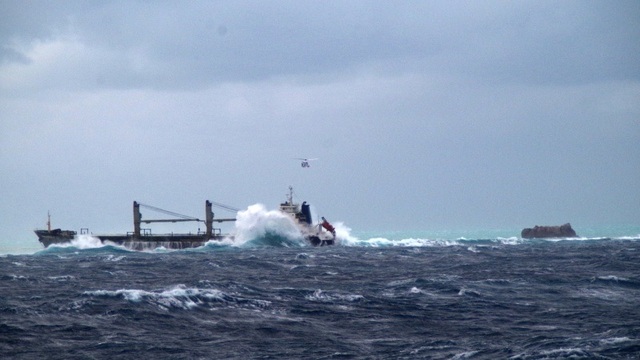
第十一管区海上保安本部(那覇市)によると、沖縄県の石垣島沖で24日午前9時35分ごろ、近海貨物船「XIN HAI ZHOU 2」(パナマ籍)が座礁した。同日午後に石垣航空基地所属のヘリコプターが乗組員の中国人船員19人全員の救助を完了。船内に浸水が発生している模様だが、同日午後1時20分時点で油の流出は確認されていない。
英国の船価鑑定大手ベッセルズバリューによると、「XIN HAI ZHOU 2」は2008年に中国造船所で竣工した1万3600重量トン級近海貨物船。中国のリース会社が保有し、中国船社が運航している模様。
座礁時には積み荷としてバイオマス燃料のヤシ殻1万トンを積載し、石垣港に向かっていた。燃料に重油185キロリットルとディーゼルオイル65キロリットルを積んでいる。
座礁時の天候は曇り、北東の風17メートルで、海象は2メートルのうねりが生じていた。24日午前9時5分ごろ、浅瀬の方向に漂流する同船に対し、巡視船「いらぶ」が無線で呼び掛けたところ、「本船機関出力が弱く、風に流されてリーフへ近寄っている。タグボートを要請してほしい」との回答があり、その直後に座礁した。
日本海事新聞社
パナマ船籍の貨物船「シンハイズー2」が「XIN HAI ZHOU 2」(IMO:9507104)ならエンジントラブルでも、沈没しても不思議ではないと思うよ。
検査会社が国際船級連合のメンバーではないOVERSEAS MARINE CERTIFICATION SERVICESであればまともな検査はおこなっていない可能性は高い。
こんな状況でタグボートが仕事を受けると思うところが船員なのか、管理会社なのか、常識がないと思う。まあ、常識がないからOVERSEAS MARINE CERTIFICATION SERVICESを検査会社を選んだ可能性は高い。
海保は船が沈没した時に備えて、船の保険会社の情報を船長から聞いておくべきだと思う。他の記事には「現場は国内最大のサンゴ礁が広がる石西礁湖がある海域」と書かれているから補償金額や支払い条件を今のうちからしっかり確認しておくべきだと思う。そして簡単に船長を帰らしてはダメ。海保は船員が帰ったらしばらくしたり船主や管理会社から音信不通になる経験を何度も体験しているからわかるだろう。
2013年の一月に米海軍掃海艦「ガーディアン」が座礁事故を起こし、3月下旬に船体の4カ所を切断しての解体、撤去作業が終了した。比政府は最近、ガーディアンによるサンゴ礁への被害を受け150万ドル(約1億4700万円)の賠償金を請求する方針を明らかにした。事を考えれば、撤去だけでなくサンゴ礁への被害に対する賠償をしっかりと取るべきだと思う。ちなみにと言う事なので保険会社が逃げれないようにしっかりと海保と日本政府は対応するべき。

24日午前9時35分ごろ、沖縄県石垣島の観音崎灯台の西方約7200メートル沖合で、パナマ船籍の貨物船「シン ハイ ズー2」(8461トン、長さ140メートル)が座礁した。第11管区海上保安本部によると、石垣海上保安部所属の巡視船2隻と11管区所属のヘリコプター1機が臨場し、乗組員の中国人19人全員を救助した。けが人はいない。
【写真】「おかしい」そう思った次の瞬間… 血を流し泣き叫ぶ子、ぐったりする子
24日の冬型の気圧配置が強まった影響で事故当時、付近海域には強風警報が出ていたという。
11管によると同日午前9時5分ごろ、石垣海保の巡視船が浅瀬に流されている貨物船を発見。同船から「風に流されてリーフへ近寄っている。タグボートを出してほしい」と要請があった。同船はウッドチップの資材1万トンを積み、石垣港に向かっていた。
同日午後9時現在、石垣海保の巡視船1隻が座礁船を監視中で、沈没や油漏れなどは確認していない。
ANAMA-August 25, 2022— The Panama Maritime Authority (AMP) through the Directorate General of Merchant Marine (DG GM) that oversees the Ship Registry, has introduced measures for strengthening the flag inspection program, with emphasis on vessels calling at US ports eligible for a US Coast Guard’s Port State Inspection (PSC), and improving control and compliance rate of the fleet.
The measures will ensure compliance with safety, security, and environmental standards by encouraging and promoting a better maritime industry. In addition, the Registry is increasing monitoring of vessels with deficiencies and detentions through the regional Port State Control regimes.
A series of actions aim at making the Panamanian fleet part of the US Coast Guard’s QUALSHIP 21 program, where, at the end of July, the Registry has an average compliance rate of 98.97% for the last 3 years, among which the following stand out:
- A flag inspection mechanism for vessels arriving at U.S. ports, based on risk factor.
- Merchant Marine Notice – MMN-08/2022, which informs that, as of August 1, 2022, a special flag inspection program will be initiated for vessels arriving at US ports whose history makes them candidates for a Port State Inspection (PSC) by the USCG.
- Merchant Marine Circular – MMC 381, which implements the pre-arrival checklist for Panama-flagged vessels arriving at US ports to help shipowners, operators, technical managers, designated persons ashore (DPA) and the Master of the vessel to find weak elements that may be grounds for detention through PSC inspections by the US Coast Guard.
- Merchant Marine Notice MMN-14/2021, which informs that all Panama-flagged vessels transiting or visiting Panamanian ports prior to arrival in the United States may be subject to a special Security Screening Inspection (SSA), to avoid possible detention in the aforementioned region.
- Directorate General of Merchant Marine Resolution No.106-183 of August 03, 2020, which strengthen measures that will detect and act against vessels detained multiple times, so that they for improving their conditions, performance and mitigate the recurrence of detentions, and impose sanctions to Recognized Organizations (RO) and / or ships, who ich have shown serious faults affecting the image of the Panamanian registry.
- Merchant Marine Circular MMC-393: Pre-arrival checklist for Australian ports, to assist ship owners, operators, technical managers, designated persons ashore (DPA) and masters of vessels, in finding weak elements that may result in detention, through Port State Control Inspections by the Australian Maritime Safety Authority.
- Merchant Marine Notice MMN-13/2021 Annual Flag Safety Inspection for Priority 1 vessels in Paris inspection and screening scheme for Paris MOUs arriving at any port in Italy.
- Merchant Marine Notice MMN-02/2022 – Flag Safety Inspection for vessels operating in Paris MoU; it is established that all Panama-flagged vessels over 20 years of age arriving at any port of the signatory countries of this MoU, will be subject to a flag safety inspection (ASI) every six (6) months.
今後、航海データ記録装置(VDR)が搭載される船にはフロートタイプを設置する事を義務付け、既存の航海データ記録装置(VDR)が搭載されている中小型船には時期を決めてフロートタイプにするように規則改正を行わないと下記のように航海データ記録装置(VDR)があるから原因究明出来ると思っても、沈没する場所によっては回収な困難な事があると思う。
奄美大島沖でパナマ船籍の貨物船「ガルフ ライブストック1」(1万1947トン、外国人乗組員43人)が遭難した事故は2日、発生から1カ月になる。救出された2人と死亡確認された1人を除く40人の行方が依然不明。船体や航海データ記録装置(VDR)も見つからず、原因究明のめどが立っていない。
第10管区海上保安本部は事故後1週間で通常の哨戒態勢による捜索に切り替えた。乗組員の母国であるフィリピンやニュージーランド、オーストラリアの家族や友人から捜索の進捗(しんちょく)状況を尋ねるメールが届いている。
救助された男性乗組員(45)は「エンジン1基が停止した後、横波を受けて沈んだ」と説明。ただ証言を裏付けるVDRを回収できておらず、事故原因の解明に至っていない。
貨物船は8月14日、牛約5800頭を積み、ニュージーランドのネーピア港を出港。9月4日に中国の唐山港に到着予定だった。
海上保安庁は2日午前1時45分ごろ、奄美大島の西約185キロの公海上で、貨物船が発信した遭難信号を受信。周辺海域は当時、台風9号の風速25メートル以上の暴風域に入っていたとみられる。
2、4日に救助された2人は奄美市の県立大島病院で手当てを受け、19日に帰国した。
事故を受けニュージーランド政府は海上輸送の実態を調査。今月23日まで海路での家畜輸出を停止している。
多くの行方不明者の事実とオーストラリア人とニュージーランド人が行方不明者に含まれているからここまで取り上げられている事が問題と思う。
まあ、世の中は公平でもないし、矛盾は存在する。
今回の事故はスタビリティが悪い船で台風の影響を受けている海上を避難せずに航海した事が一番の問題だと思う。
By Alan Weedon
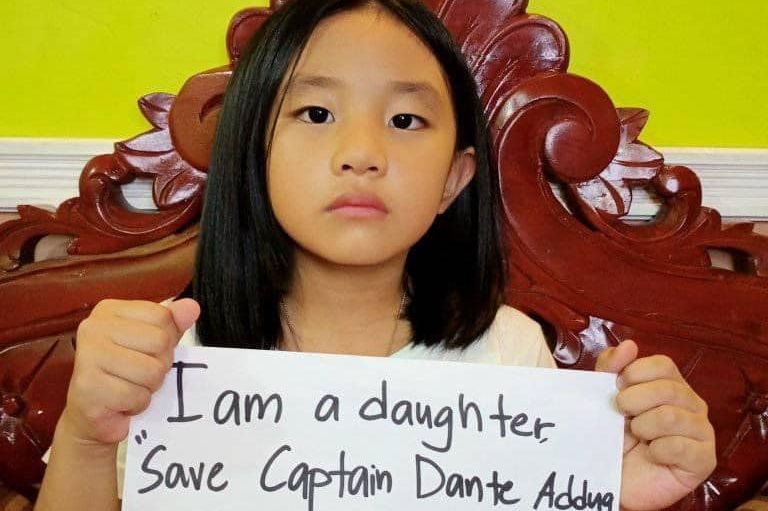
The capsized ship has devastated the families of dozens of Filipino sailors lost at sea.(Supplied: Save The Forty)
Disaster struck on September 3.
The live export ship, the Gulf Livestock 1, was travelling north-west in the East China Sea when it capsized in rough seas due to Typhoon Maysak.
The Panamanian-registered, 11,947-ton ship had sent a distress call from the west of Amami Oshima island in Japan as strong winds and heavy seas buffeted the vessel.
The ship was carrying almost 6,000 cattle and 43 crew, which included 39 Filipinos, two Australians and two New Zealanders.
To date, only two survivors and a body have been found by the Japanese Coast Guard. All are Filipino.
Rescue efforts have been stymied by incredibly harsh conditions, as the search area has been in the direct path of two typhoons: Maysak and Haishen.
Despite this, families of the remaining 40 missing crew haven't let go of the hope of finding their relatives alive — and now they've galvanised a virtual global search and rescue effort alongside that of Japan's.
And for the families of the 36 missing Filipinos, the disaster has significant consequences back home.
"Lindon is one of 100 grandchildren of my 93-year-old mother," Beth Pitogo-Malvar, aunt of one of the missing seafarers, Lindon Pitogo, said.
"She's crying all the time … all of us are affected."
'It's a hard life'
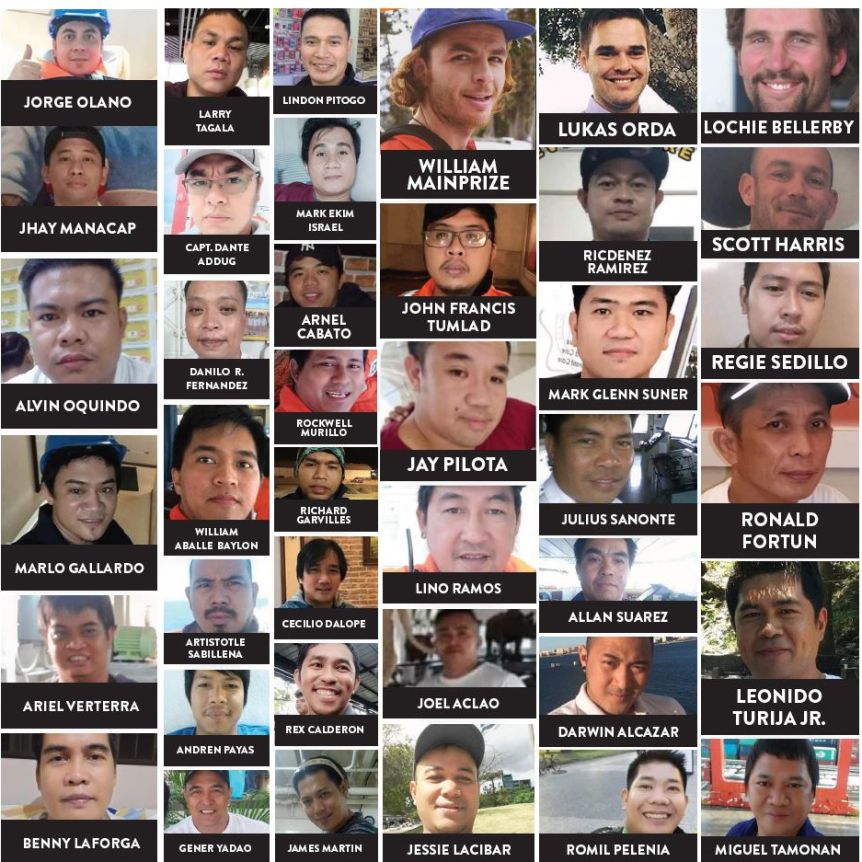
Families of the missing have launched an online campaign called Save the Forty.(Facebook: Save The Forty)
Liezel Pitogo, Lindon's wife, told the ABC of the horror that followed the discovery of the Gulf Livestock 1's capsizing.
"I couldn't believe it. One of our friends posted [on Facebook] and he sent me a message," Ms Pitogo said."It was totally unexpected because he didn't tell me that there was a problem. The last time we talked he said [conditions] were rough with big waves.
"We are feeling sad and hurt especially when a day passed by and we don't get any new updates about him."
She, along with their two children, live in Laguna, a province south-east of Manila.
They rely on her husband's remittances, which amount to about $1,444 a month, to keep her children at school and cover day-to-day expenses.
Her aunt-in-law, Ms Pitogo-Malvar, added that Mr Pitogo was also financially supporting his parents, as his father is unemployed due to polio.
"He is the only one working in the family. He has an 18-year-old studying at uni, and a four-year-old," she said.It remains unclear if the ship's owner, Gulf Navigation Holdings, plans to provide financial assistance to the families of the missing sailors.
The Philippines' Overseas Worker Welfare Administration (OWWA) has given financial assistance to the two surviving Filipino crew amounting to 100,000 pesos ($2,914) each.
The ABC understands other affected families have been given some OWWA financial assistance, but in order to obtain funds, families have to apply for it.
Korpil, a Filipino shipping recruitment agency, told the ABC in a statement that it has also distributed financial assistance to each of the 36 families, but it did not share the amount for privacy reasons.
Father Paulo Prigol, the South-East Asian coordinator for Catholic maritime charity Stella Maris, said his team was offering some families "limited financial support counselling".
Ms Pitogo said an OWWA representative called to check in about her welfare days after the incident, but they did not offer financial aid at the time.
"In the Philippines, they've got big families," Ms Pitogo-Malvar said.
"University there is very expensive. Medicine is very expensive. Everything in the Philippines is very, very expensive."
"It's a hard life."
'From our village, we export garlic and labour'
Seafaring is a lucrative industry for Filipinos looking for social mobility, and it's one of the main reasons why the Philippines contributes the highest number of skilled seafarers in the world.
It's estimated that of the more than 1.65 million seafarers globally, Filipinos make up a quarter of the total population, at around 400,000.
It also provides the second-highest number of ship officers (responsible for the navigation and overall running of the ship), after China, according to the International Chamber of Shipping (ICS).
Since the late 20th century, shipping has been one of the many industries fuelled by one of the Philippines' primary exports: people.
"It's common to hear from a neighbour in the Philippine countryside: 'From our village, we export garlic and labour'," said Gunnar Lamvik, a senior researcher at Norway's SINTEF, an independent research organisation.
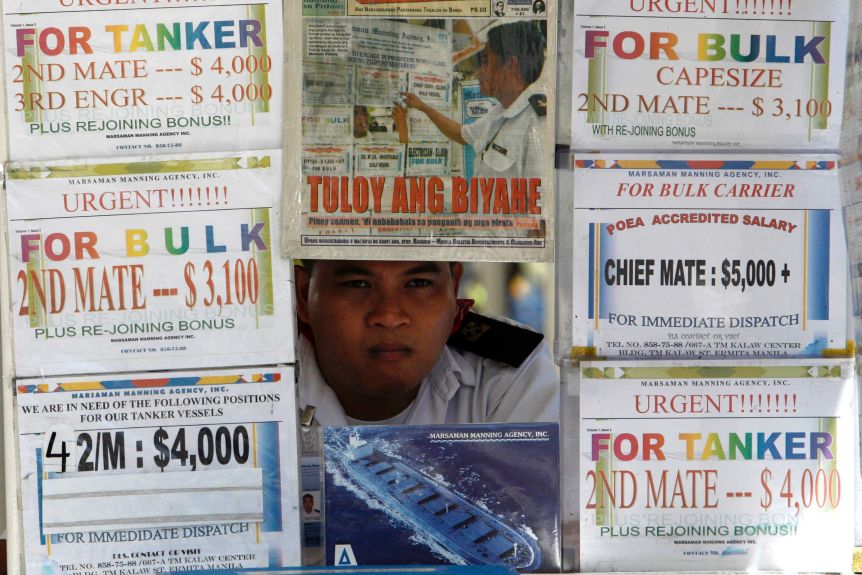
There are about 400,000 Filipino sailors around the globe annually.(Reuters: Romeo Ranco)
About 300,000 Filipino seafarers were estimated to have sent an average of $26,215 in remittances home last year, according to Father Prigol from Stella Maris. In total, this amounted to $9.1 billion.
Looking at remittances on the whole, Filipino overseas foreign workers contributed to 9.3 per cent of the country's total GDP in 2019, according to figures from the World Bank.
Apart from giving their families more access to material goods, these remittances often contribute to their social mobility prospects.
"When seafarers come back to their hometowns, they're at least supposed to appear successful, and I've met many [Filipino] seafarers who go back with pockets full of small [US] dollar bills," Dr Lamvik said."But of course, it's also channelled to sponsoring [relatives'] education … usually it's the eldest paying for the youngest."
Concerns about vessel predated incident
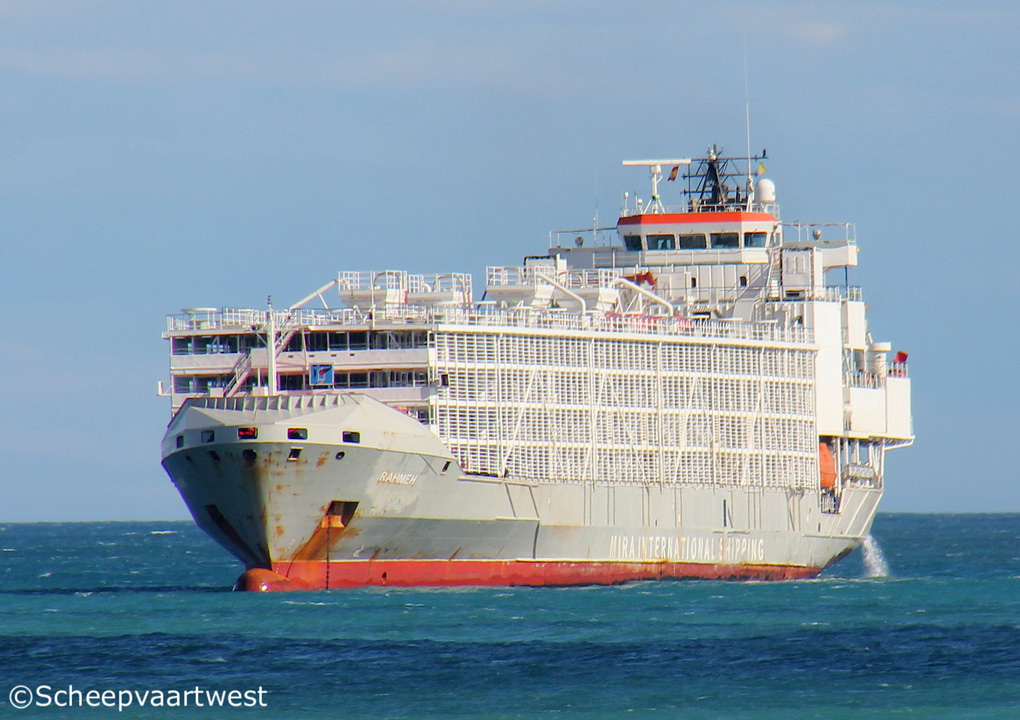
The Gulf Livestock 1 was carrying about 6,000 live cattle when it capsized.(Supplied: VesselFinder.Com)
While the vessel has been referred to under a number of different guises, it has been known as the Gulf Livestock 1 since March 2019.
Since May last year, the vessel had recorded 25 official safety deficiencies, according to shipping safety website Equasis.
The Australian Maritime Safety Authority (AMSA) identified the bulk of its deficiencies in May 2019, which prevented it from leaving Broome.
AMSA found that the on-board safety management system failed to provide for "operational safety of navigation and maintenance of ship and equipment".
It also found some crew were not properly trained on how to use its electronic navigation system, and that the system was not updated with the latest navigational hazards, and consequently was not being used.
While those deficiencies were eventually rectified, Indonesian authorities in December 2019 identified seven further deficiencies, some of which included the vessel's propulsion, emergency, and gauge systems.
Records show the vessel was anchored in Indonesia for at least another four months following the Indonesian investigation.
A representative of one of the crew, who spoke on the condition of anonymity to the ABC out of fear of employer reprisals, said sailors were left stranded on the vessel without pay during this period while parts were being sourced.
They also alleged that Filipino sailors were paid about $494 less than other nationals aboard at the time.
"They didn't have money on the ship, [and] they told us they weren't getting fed properly," the representative said."They wanted to keep [their complaints] quiet because obviously they didn't want to lose their job."
Gulf Navigation Holdings, a Dubai-based shipping company that lists the Gulf Livestock 1 as part of its fleet, did not reply to the ABC's repeated requests for its response to these allegations.
Sailors lost in a search area 'the size of California'
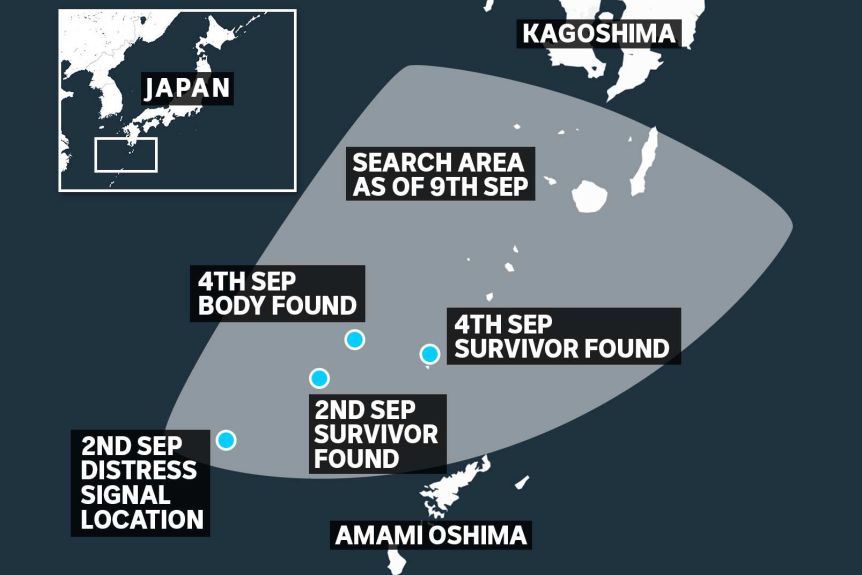
The Japanese Coast Guard also found numerous cattle carcasses in the immediate search area.(ABC News: Jarrod Fankhauser)
This amounts to more than 400 square kilometres, an area 1.8 times bigger than the size of Victoria.
This is because of the incredibly large "drift scenarios", which have been exacerbated by the two typhoons, that may have pushed survivors far from Japan and into the Pacific Ocean's vast expanse.
The waters off the south of Japan sit on the Central Kuroshio Current, one of the currents off the country's eastern coast that feeds into the colossal Northern Pacific Gyre, which sends water from East Asia to the US West Coast.
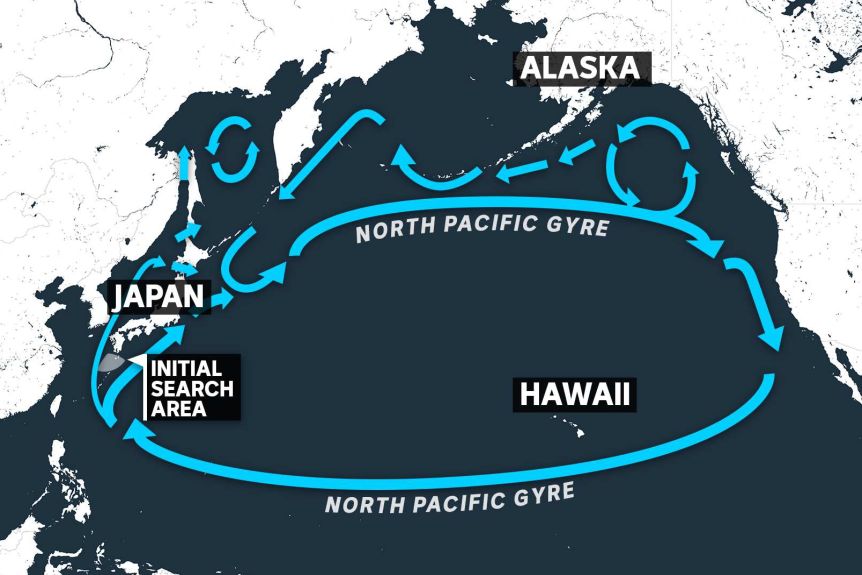
The search parties are uncertain about how far the typhoons pushed survivors.(ABC News: Jarrod Fankhauser)
"We believe that they're either going north-north-east toward the north tracking route where all the ships are, which will take them along the Aleutians and drop them down to the west coast of America," Ms Alladio said.Or, she said other survivors may have been pushed into eddies (swirling ocean currents) off of Japan's east coast, where some may have "kicked them to Hawaii".
So far, volunteer searchers have been looking for the missing virtually amid the coronavirus pandemic, scrawling through dense satellite imagery in and around the immediate search zone.
But this is not going to be a simple or quick task.
"There are over 4,000 islands, and we've targeted about 30 of them," Ms Alladio said.
For now, volunteers are looking for survivors who may have washed up on one of the islands in the search area, or traces of debris that could give searchers clues as to where they may have drifted.
Based on the life rafts installed on the ship, Ms Alladio said the missing crew had supplies to last 30 days. The supplies run out on Saturday, but the life rafts themselves can be used for longer.
As the days without their loved ones wear on, and the prospects of finding the sailors alive get slimmer, relatives are calling out for anyone to help.
"Whoever's reading this story, if you have any information about [their] whereabouts, please let us know," Ms Pitogo said.
"To those people who have connections … help us intensify the search and rescue."
(2021.2.18 安全勧告)
(貨物船 JIA DE 沈没事故
神奈川県川崎市東扇島南東沖 2019.10.12発生)
本事故は、夜間、貨物船 JIA DE が、京浜港K1錨地に錨泊中、台風第19号が接近して
増勢した風及び波を受けて船体が動揺する状況下、波の打ち込みにより上甲板に滞留した
海水(以下「本件滞留水」という。)が貨物倉に浸水し始めたため、操舵不能となったのち
に左舷船首方から左舷側面に一段と増勢した風及び波の打ち込みを受けるようになり、船
体が右舷に大きく傾斜して貨物倉への浸水が続き、復原力が低下していたことによって横
転し、貨物倉内への浸水が進んで沈没したことにより発生したものと考えられる。
本件滞留水が貨物倉に浸水し始めたのは、貨物倉通風筒の開口部蓋が開の状態となって
いたこと、並びに貨物倉のハッチカバーにおいてドレン受けの破口及び変形があったこと
から、貨物倉の風雨密が保持されていなかったことによるものと考えられる。また、甲板
上への波の打ち込みは、JIA DE の乾舷が貨物倉への浸水及び本件滞留水によって小さくな
ったことから、更に助長されたものと考えられる。
JIA DE が操舵不能となったのは、船体動揺によって上甲板上の空気抜き管からA重油タ
ンクに混入した水が燃料油と共に発電機原動機の燃料油供給配管系統から発電機原動機に
供給されたことから、同原動機のシリンダ内で燃焼不良又は不着火を起こし、発電機が停
止して船内電源を喪失したことによるものと考えられる。
このことから、運輸安全委員会は、本事故の調査結果を踏まえ、同種事故の再発防止及
び被害の軽減を図るため、旗国であるパナマ共和国海事局に対して次のとおり勧告する。
パナマ共和国海事局は、荒天中に乗組員及び船舶の安全を確保するために、パナマ共和
国籍船舶の船舶所有者及び船舶管理会社に対して、次の事項を実施するよう指導すること。
(1) 船長及び乗組員に対して、荒天が予想される際には、貨物倉通風筒の開口部蓋等の
暴露甲板における開口部の閉鎖を確実に実施するよう指導すること。
(2) 船長及び乗組員に対して、荒天時を含むいかなる状況でも十分な乾舷が維持できる
よう、船体のコンディションを調整するよう指導すること。
(3) 船長及び乗組員に対して、燃料油タンクの空気抜き管に水の浸入を防止するための
管頭金物等が取り付けられていない場合には、水が混入した燃料油が発電機原動機等
の燃料油供給系統に入らないよう、燃料油タンクのドレン排出作業を、荒天時の船体
動揺があるときにも行うよう指導すること。
(4) 船長及び乗組員に対して、非常時の総員退船に関し、携行品の持ち出し、船内から
脱出する行動、救命胴衣及び適切な服装の着用並びに海上における生存技術に関する
訓練を再度実施するよう指導すること。
(5) 所有する船舶又は管理する船舶の貨物倉ハッチカバーの風雨密が保持されるよう保
守整備を実施すること。


船舶事故調査報告書 貨物船 JIA DE 01/20/21 (運輸安全委員会)
読めない人とはこちらへ (船舶事故調査報告書 貨物船 JIA DE)
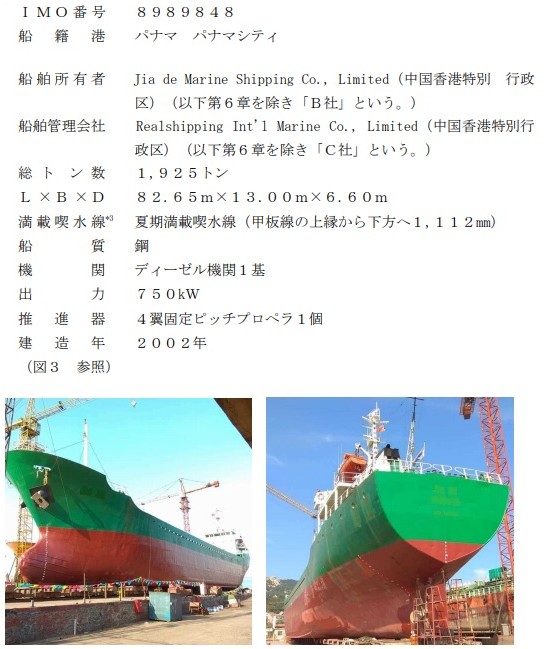
パナマ船籍だけの問題ではないと思うが、大手の海運会社のグループ会社の船を登録する船籍なのに問題がある会社の船や問題のある船を他の船籍に比べれば登録させる傾向があると言う事だと思う。大手の海運会社に問題があるのか、船籍と海運会社に問題があるのかはっきりとは言えないが、個人的には割合はわからないが両方に問題はあると思う。
by Mary Triny Zea, Michelle Carrere
Why would a Chinese ship want to fly the Panamanian flag? This practice is known as flying a “flag of convenience” and although it’s legal, experts say it often lets shipowners benefit from lax auditing and is closely associated with illegal fishing because it can hide the identity of a vessel’s true owners.
Mongabay Latam and Bloomberg Línea investigated violations and alleged crimes committed by the fleet of ships flying the flag of Panama, the country whose flag is most commonly used.
Our analysis of an official database shows that some of the vessels operating under the Panamanian flag do business with a Chinese company that has one of the global fishing industry’s longest criminal records.
This is the first in a two-part series originally published in Spanish on Mongabay Latam. You can read the second part here.
The crystal-clear waters of the oceans surrounding Panama hold wealth beyond the abundance of fish. Legal gaps and flexibility in some of the regulations governing fishing activity have become the ideal bait, attracting companies from all over the world that seek to benefit by keeping some of their business deals in the shadows. This is one reason some experts and organizations refer to Panama as a tax haven.
In December 2019, the European Commission issued Panama a “yellow card,” a warning to nations that do not cooperate in the fight against illegal, unreported and unregulated (IUU) fishing that their seafood exports to Europe could be suspended if they don’t shape up. (Panama got a yellow card in 2012 as well, which the commission lifted in 2014.) According to the Food and Agriculture Organization (FAO) of the U.N., IUU fishing is the third most lucrative illicit activity in the world, after the trafficking of drugs and weapons. Researchers estimate that IUU fish catches are worth up to $17 billion annually.
There are several cases in which ships flying the Panamanian flag have been accused of illegal fishing. For example, in 2018, authorities from Madagascar seized a vessel that was taking marine resources from the African country. Its prime minister, Christian Ntsay, said the ship had “previously participated in the trafficking of our natural resources” and that what happened was “unacceptable.”
In October 2020, a vessel called the Nika was also added to a black list of IUU vessels after fishing in Antarctic waters without authorization.
Additionally, the European Commission stated upon issuing the yellow card that ships with the Panamanian flag that had declared they would not participate in fishing activities later engaged in these activities without having the necessary licenses. This “resulted in serious breaches of the applicable laws, regulations and conservation and management measures,” according to the European Commission. It also stated that Panamanian fish-carrier vessels were misregistered as general cargo ships and then used to transport fish without a license.
What the majority of these vessels have in common — in addition to having committed crimes — is that despite flying the Panamanian flag, they belong to foreign companies. Some of them do not even operate in the vicinity of Latin America.
A ship flying the flag of a country separate from the place the owner lives is a permitted and very common practice known as flying a “flag of convenience.” Panama is the country whose flag is used most often for this practice. This is why Panama is also the country with the longest registry of vessels: just over 8,000 ships fly its flag, which is more than 18% of the world fleet, according to bulletins from the Panama Maritime Authority.
There are many legitimate reasons why a ship might fly a flag of convenience — for example, a fishing company wanting to change locations and head to a different fishery. However, the flags can also allow companies to benefit from lax supervision, to avoid environmental regulations and stricter labor laws and even to hide the identities of the real owners of a ship, enabling them to avoid being held accountable if their ships carry out illegal activities. According to the Environmental Justice Foundation (EJF), a British environmental organization, Panama is perceived as a country with regulations and controls that benefit many fishing companies around the world.
“It is widely acknowledged that flags of convenience are disproportionately associated with illegal fishing,” says Callum Nolan, an EJF researcher who has studied this issue on a global level.
In this journalistic investigation, Mongabay Latam and Bloomberg Línea worked since February 2022 to gather details on the supervision and management of Panama’s fleet to determine how much control the country’s authorities have over the ships that fly its flag. However, the authorities’ responses to our requests for information and data were incomplete, and according to lawyers consulted, show a concerning lack of transparency. Despite the difficulty of accessing this information, the official data that were provided and analyzed reveal, for example, that some of the ships operating under the Panamanian flag do business with a company with one of the longest criminal records in the world’s fishing industry.
The Chinese fleet flying Panamanian flags
Two authorities in Panama have jurisdiction over issues related to IUU fishing. The Panama Maritime Authority regulates the flagging of ships and is the governing entity of the Panamanian fleet. The Aquatic Resources Authority of Panama (ARAP) grants fishing licenses and regulates fishing activity for vessels flying Panamanian flags that operate inside and outside of Panama’s national territory.
Mongabay Latam and Bloomberg Línea asked both institutions for a list of ships flying the Panamanian flag that were sanctioned in the last 10 years, including the reasons for the sanctions. Only ARAP submitted this information. The Panama Maritime Authority refused to provide it.
Mongabay Latam and Bloomberg Línea analyzed the database provided by ARAP and cross-checked the data with information from the International Maritime Organization — the U.N. agency responsible for sailing safety — and from the web pages of other organizations focused on ship tracking, including MarineTraffic, Equasis, and Global Fishing Watch. We found that almost all of the vessels sanctioned between 2019 and 2021 — 28 out of a total of 32 vessels— are not fishing vessels but reefers, and that all of them belong to foreign companies, especially from China.
Reefers are large refrigerated ships that can measure up to 150 meters (about 492 feet) in length. They function as enormous refrigerated storage areas that receive fish from other vessels at sea and bring it to port. By doing this, reefers allow fishers to empty their own vessels’ storage areas without having to return to solid ground. This lets them continue fishing without interruptions for long periods of time.
The act of transferring fish from one ship to another is known as transshipment, and though it can be legal, the FAO considers it one of the most common strategies to obscure illegal fishing. This is because fish caught by numerous ships are mixed inside the reefers’ storage areas, preventing the fish from being traced.
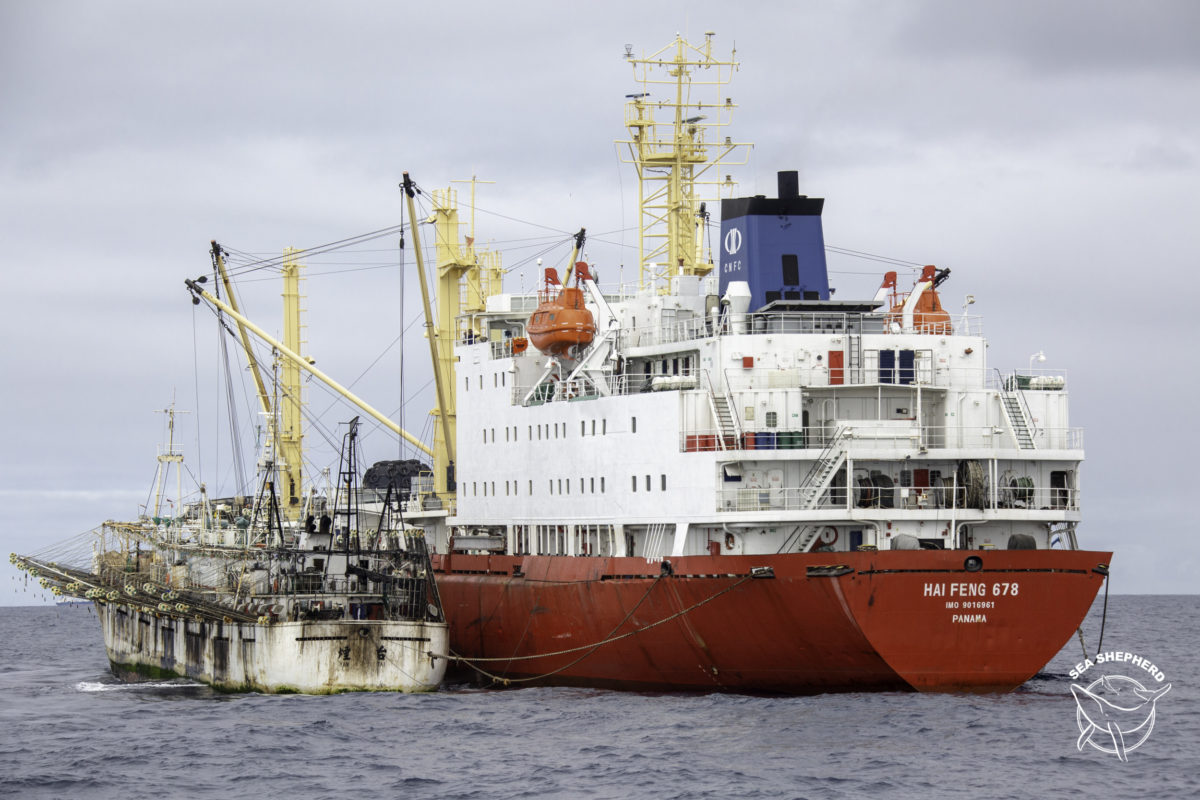
A Chinese fishing ship transferring its catch to the Panama-flagged Hai Feng 678 reefer. Image courtesy of Sea Shepherd.
“Reefers receive cargo from many fishing vessels composed of different species that were caught in different places,” says Milko Schvartzman, an Argentine expert on marine conservation and the ocean policy coordinator of the nongovernmental organization Circle of Environmental Policies. Fish that are caught both legally and illegally “are mixed in the storage area and then no one can know which ship the cargo that came in the reefer belongs to,” says Schvartzman, who has spent years studying the Chinese fleet operating in South America.
However, the problem Schvartzman describes is exacerbated if these large refrigerated ships do not declare their transshipments to authorities. Then it becomes impossible to know even which ships the reefer met at sea and received fish from. According to the ARAP database, this is the most common infraction.
Between 2019 and 2021, the period analyzed for this investigation, a total of 13 reefers flying the Panamanian flag carried out undeclared transshipments. Another seven ships — four of them reefers — were sanctioned for illegal fishing. One of these cases involved shark finning, which has been prohibited in Panama since 2006 and consists of cutting the fins of sharks off to sell them and tossing the animals’ bodies back into the ocean. The rest of the sanctions, for various breaches of the law, total 15 cases with some of the ships accumulating more than one infraction.
Added to this is another issue. Of the 14 violations of the law that were sanctioned in 2021, five of them were perpetrated by three reefers. According to satellite information processed by the platform Global Fishing Watch, those three reefers have received cargo from fishing vessels belonging to the Chinese company Pingtan Marine Enterprise Ltd. (or its subsidiaries and affiliates), which has a serious history of illegal fishing.
A study published in March 2022 in the journal Science Advances ranks Pingtan Marine Enterprise second on a list of companies that it calculates are collectively responsible for one-third of the crimes related to fishing that were recorded globally between 2000 and 2020.
These three reefers are the Star Mariner, which belongs to Hong Kong Yaode Asia Shipping Group Ltd., the Ocean Mariner, which belongs to Good Success Transportation Ltd. and the Global Mariner, which belongs to Hongfa Shipping Co. Ltd.
According to ARAP’s database, the Star Mariner and the Ocean Mariner were each punished with a fine of $10,001 for carrying out undeclared transshipments. Meanwhile, the Global Mariner was fined on two occasions — $200,000 and $300,000 — for operating without respecting the requirements of its authorization to fish or for simply not having one, in addition to not complying with legally required conservation measures and failing to continuously transmit a satellite signal.
This last infraction, which the Star Mariner also committed, has been identified as one of the most common maneuvers among ships that commit crimes at sea, since it allows them to become “ghost ships” and conduct their operations without being seen.
These findings from the ARAP data coincide with studies recently published by research centers and nongovernmental organizations that investigate environmental crimes.
A report by the Washington, D.C.-based Center for Advanced Defense Studies (C4ADS), which uses the satellite platforms Global Fishing Watch and Windward to track the activity of the fishing vessels owned by Pingtan Marine Enterprise, reveals that the company’s ships were repeatedly in contact with various reefers at sea. Strikingly, among the reefers the company’s ships used most frequently, according to C4ADS, are the three with Panamanian flags that Panamanian authorities sanctioned for failing to report their transshipments and failing to comply with regulations: the Star Mariner, the Global Mariner and the Ocean Mariner.
A recent report called “Fishy Business” by the environmental organization Greenpeace analyzes how transshipments at sea facilitate illegal fishing. It found that the most common flag of convenience among the vessels it analyzed was Panama. The report notes that the European Commission, in issuing Panama a yellow card for the second time in 2019, “found that ‘Panama did not monitor the compliance of those vessels with national provisions governing transshipment activities’ and that ‘the sanctions imposed to vessels engaging or supporting IUU fishing activities, are not effective and deterrent.’”
The history of Pingtan Marine Enterprise Pingtan Marine Enterprise — one of the main companies in the world perpetrating fisheries infractions, according to the Science Advances study — rose to fame in 2017.
This is when news broke that the Fu Yuan Yu Leng 999 refrigerated ship — which then belonged to Pingtan’s main subsidiary, the Fuzhou Honglong Ocean Fishing Company Ltd. — was detained by the Ecuadorian Navy after crossing the Galápagos Marine Reserve without authorization while holding more than 7,600 sharks inside.

The destruction of the illegal cargo of the Fu Yuan Yu Leng 999. Image courtesy of Galápagos National Park.
Many of these sharks were from species considered “Critically Endangered,” and 432 were fetuses. This is one of the most symbolic cases of marine species trafficking and illegal fishing — not only because of the sheer size of the crime and its effect on marine ecosystems, but also because of its legal consequences.
The ship’s crew was jailed, the ship was confiscated, and the company was fined $6.1 million. Walter Bustos, the director of Galápagos National Park at the time, says this is “one of the few times in the entire world when the ocean crime of transporting illegal fish is prosecuted at the highest level.”
Pingtan Marine Enterprise is known in the shipping world for operating one of the largest Chinese distant-water fleets, vessels that operate outside of their national territory. According to the company’s website, it controls 143 ships.
Mongabay Latam and Bloomberg Línea used the Global Fishing Watch satellite platform to review the area where the three reefers that Panama sanctioned operate. The Ocean Mariner and the Star Mariner have both spent the past five years moving between the Arabian Sea, the Philippines, China and Japan.
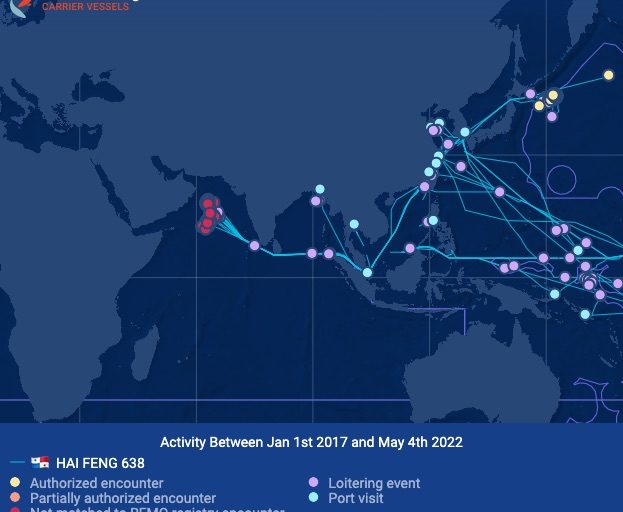
The movements of the Star Mariner, which was previously called Hai Feng 638, between January 2017 and May 2022. Map courtesy of Global Fishing Watch.
The Global Mariner, however, has been active near Argentina and the Galápagos Islands off the coast of Ecuador. Satellite information from Global Fishing Watch shows the Global Mariner met with the Fu Yuan Yu 7883 fishing vessel off the coast of Argentina. Fu Yuan Yu 7883 is the property of Fujian Provincial Pingtan County Ocean Fishing Group, one of Pingtan Marine Enterprise’s subsidiaries.
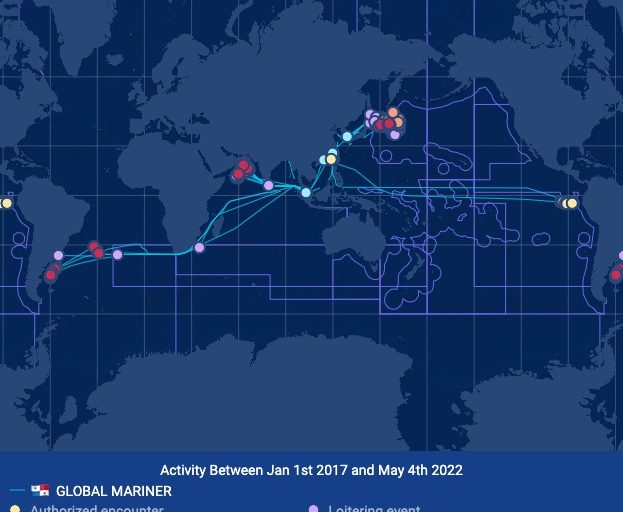
The movements of the Global Mariner between January 2017 and May 2022. Map courtesy of Global Fishing Watch.
The Fu Yuan Yu 7883 was involved in a case of forced labor when 18 Indonesian fishermen reported that they had not been paid for the 20 months that they worked on board between 2018 and 2020. According to the C4ADS analysis, another six ships linked to Pingtan Marine Enterprise have also been involved in cases of forced labor and exploitation, and on five of the company’s ships fishermen have died or been seriously injured.
Pingtan Marine Enterprise did not respond to Mongabay Latam and Bloomberg Línea’s questions about its participation in illegal activities by the time of this article’s original publication in Spanish.
But what motivates so many companies to want to fly the Panamanian flag as they operate on the world’s oceans?
The benefits of flying the Panamanian flag For Panama, the activity of flagging ships generates about $87.3 million annually, according to the bulletin “Bitácora” by the Panama Maritime Authority. This process must be managed exclusively by a Panamanian lawyer.
When Panama registers a ship so it can fly the Panamanian flag, the country “does not require it to reveal the ultimate beneficial owner or owners of the activity of the vessel or its operator,” says Luisa Arauz, a lawyer from the Interamerican Association for Environmental Defense, which has offices in San Francisco, Mexico City and Bogotá. “This prevents the sanctions imposed for noncompliance with fishing regulations from having a truly dissuasive effect.”
Additionally, according to Rafael Cigarruista, general director of the Merchant Marine of the Panama Maritime Authority, the vessel’s ultimate beneficial owner does not necessarily appear on the ship’s navigation patents, documents that authorize the ship to fly the Panamanian flag.
In fact, the companies registered as the owners of a ship are often shell corporations that have no relationship with the owner nor with the nationality of the ship, according to experts consulted for this investigation.
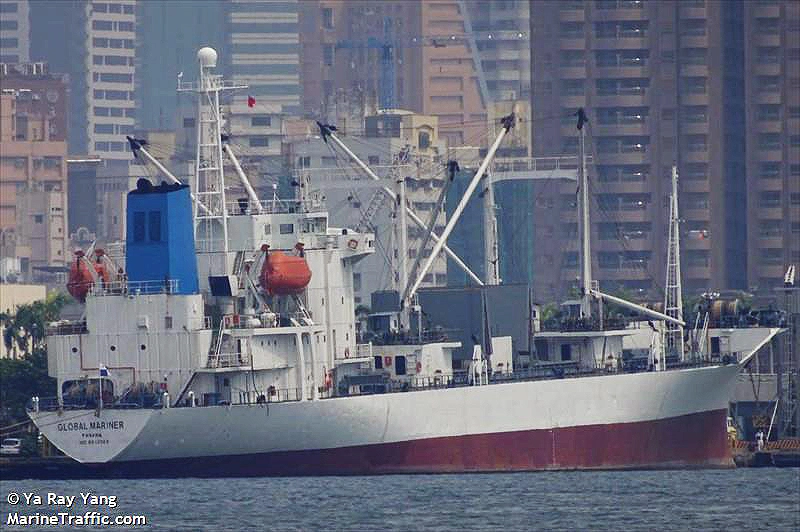
The Global Mariner. Image courtesy of MarineTraffic.
“These shell company structures are extremely complicated,” says Courtney Farthing, director of international affairs for the fishing transparency platform Global Fishing Watch. “Maybe it’s a shell company owned by another company [that is owned] by another company. And actually the person filling out the paperwork for the vessel registry maybe isn’t even aware of the true beneficial owner,” says Farthing.
This allows the true beneficial owner to “hide their identity” and makes it “more difficult to track their prior fishing behavior,” says Arauz.
For this reason, the countries whose flags tend to be flown as flags of convenience, such as Panama, “have a responsibility to ensure that they are doing their due diligence and investigating the vessel history,” Farthing says.
According to Cigarruista, Panama does this due diligence. “Ships are rejected and ships are canceled because of international violations [such as fishing illegally],” he says. Evidence of this is that when Panamanian ships are inspected to determine whether they comply with the regulations established under the Agreement on Port State Measures — a binding international agreement whose primary goal is to eliminate IUU fishing — the level of compliance with these regulations is above 90%, according to Cigarruista.
With respect to the criticism, Cigarruista says it is “a very unusual, offensive, outdated and discriminatory opinion,” and that the reason a company may choose to fly the Panamanian flag is that Panama has economic incentives available for ships that do so.
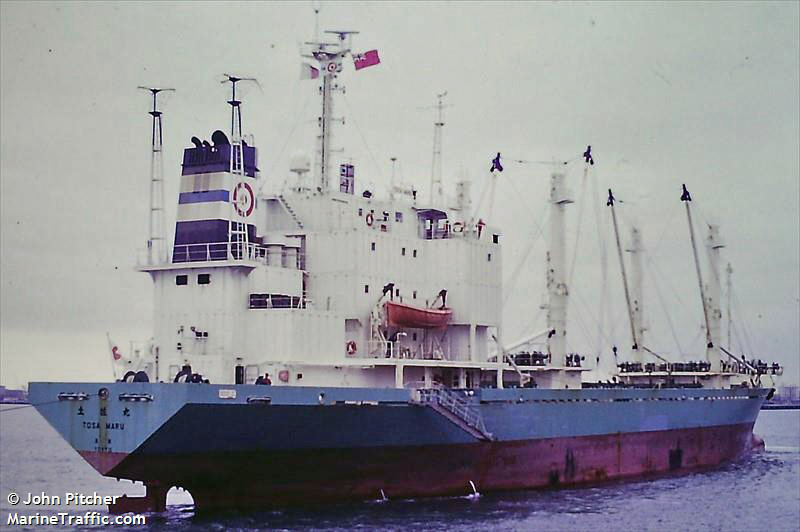
The Star Mariner. Image courtesy of MarineTraffic.
However, several lawyers and environmental organizations indicate that this decision to fly the Panamanian flag is often made to take advantage of the country’s questionable supervision. “Both the regulations and the limited supervision capacity make our flag a very popular one for foreign fleets,” says Panamanian environmental law expert Harley Mitchell.
Miguel Antonio Bernal, a Panamanian lawyer and constitutional expert, agrees with Mitchell, adding that “this is an international issue in that Panama is the [country] that [provides] the cheapest flags, more facilities provide [flags], and where the authorities look the other way for having flagged ships that they should not have.”
For example, according to the regulations, when a ship flies a Panamanian flag, a percentage of its crew must be Panamanian. However, Arauz says, compliance with this regulation is rarely verified, and in her opinion this impedes the government from monitoring the vessels “because it is difficult for a ship to go to a Panamanian port if its crew is not from there.” In fact, according to the Panama Maritime Authority, of the 318,000 crew members on ships flying Panama’s flag, just over 1,000 are Panamanian.
Despite Cigarruista’s defense, the European Union determined that “Panama does not exercise an adequate control over its vessels.” It added that contrary to the FAO’s International Plan of Action to Prevent, Deter and Eliminate Illegal, Unreported and Unregulated Fishing, “the procedures in place prior to the registration of vessels do not include a comprehensive verification of the history of the vessels to avoid the registration of fishing vessels with a dubious background or compliance profile.” Additionally, although the International Plan of Action maintains that states must give notice of transshipments and avoid transferring fish to or from vessels that fish illegally, this investigation found that neither of these measures is guaranteed.
Whether Panama’s yellow card will be lifted depends on the country making improvements to control its fleet. This includes — among other things — making information more transparent. It’s an issue that, as we will discuss in the second part of this investigation, is still far from being resolved.
Banner image courtesy of Kipu Visual.
This story was reported by Mongabay’s Latam team in partnership with Bloomberg Línea and first published here on our Latam site and on Bloomberg Línea on June 13, 2022.
Citations:
Sumaila, U. R., Zeller, D., Hood, L., Palomares, M. L., Li, Y., & Pauly, D. (2020). Illicit trade in marine fish catch and its effects on ecosystems and people worldwide. Science Advances, 6(9). doi:10.1126/sciadv.aaz3801
Belhabib, D., & Le Billon, P. (2022). Fish crimes in the global oceans. Science Advances, 8(12). doi:10.1126/sciadv.abj1927
C4ADS. (2022). Net Worth: How the Chinese Government & US Stock Investors are Funding the Illegal Activities of a Major Chinese Fishery Company. Retrieved from https://static1.squarespace.com/static/566ef8b4d8af107232d5358a/t/6260131552df360bac074201/1650463512561/Net+Worth+-+C4ADS.pdf
Greenpeace. (2020). Fishy Business: How transhipment at sea facilitates illegal, unreported and unregulated fishing that devastates our oceans. Retrieved from https://www.greenpeace.org/static/planet4-international-stateless/2020/02/be13d21a-fishy-business-greenpeace-transhipment-report-2020.pdf
Food and Agriculture Organization of the United Nations. (2001). International Plan of Action to Prevent, Deter and Eliminate Illegal, Unreported and Unregulated Fishing. Retrieved from https://www.fao.org/3/y1224e/Y1224E.pdf
外務省は、北朝鮮とパナマ船籍の合わせて3隻のタンカーについて、国連安全保障理事会の制裁決議に違反して洋上で物資を積み替えるいわゆる「瀬取り」を行ったとして、日本への入港禁止の対象に新たに指定しました。
国連安全保障理事会の北朝鮮制裁委員会は今月16日、北朝鮮船籍のタンカー1隻と、パナマ船籍のタンカー2隻の合わせて3隻が、国連安保理の制裁決議に違反して洋上で北朝鮮船籍の船舶に石油精製品などを積み替える、いわゆる「瀬取り」を行ったとして、制裁対象に指定しました。
これを受けて外務省はこれら3隻のタンカーについて、29日付けで日本への入港禁止の対象に新たに指定したと発表しました。
瀬取りをめぐっては、ことし3月にも国連安保理の制裁委員会が中国やパナマ、シンガポール船籍の合わせて27隻のタンカーなどを瀬取りに関与していた疑いがあるとして入港禁止の対象に指定していて、外務省も入港禁止の措置をとっています。
by The Editorial Team

In addition, the report resulted to the fact that Chinese nationals with close links to North Korea’s illicit shipping networks have acted as surveyors for vessels registered under the Panamanian flag, and possibly the Mongolian flag, thereby potentially providing an avenue for North Korean-linked vessels to obtain flags of convenience and other maritime services prohibited under UN Security Council resolutions.

Moreover, a number of Chinese nationals with extensive links to North Korea’s illicit shipping fleet have acted as vessel surveyors for Recognized Organizations such as Panama Maritime Documentation Services and even operated their own classification agency named the International Marine Survey Association.
The report highlights that
Several links between these entities and individuals such as shared emails, phone numbers and addresses also suggest that Fan, Dong, Zhang and the companies and organisations they operate are much more closely connected than may at first appear on the surface.
In conclusion, James Byrne, the report’s researcher, resulted to the fact that Fan’s, Dong’s and Zhang’s employment with, and operation of, Recognized Organizations and Classification Societies may therefore help explain how some North Korean-linked vessels have been able to avoid scrutiny and continue operation as foreign-flagged vessels.
Sam Chambers
The world’s largest shipping registry has been embroiled in a scandal involving sanctions-busting North Korea.
A 27-page report from the Royal United Services Institute (RUSI), a UK security think tank, highlights how three individuals from the Chinese port city of Dalian have been working for entities entrusted by both the Panamanian and Mongolian flags to survey ships and authorise certificates, including for a number of North Korean-linked vessels.
The three men – Fan Mintian, Dong Changqing, and Zhang Qiao – stand accused of helping the Kim Jong Un regime flout sanctions.
RUSI found that Fan and Dong have worked as surveyors for an organisation authorised by Panama called Panama Maritime Documentation Services (PMDS), and have provided various certificates to North Korean-linked ships.
Fan and Dong were embroiled in an earlier North Korean illegal shipping incident when the vessel Light, managed by their company Dalian Sea Star Ship Technology, was “suspected of transporting North Korean missile technology to Myanmar”.
PMDS was also found to share an address and other contact details in Dalian, a city located near the North Korean border, with Fan and Dong’s companies, as well as another surveyor authorised by Mongolia called International Maritime Survey Association (IMSA), established by Zhang Qiao.
The report concluded that the business connections provided by the three men from Dalian could provide “an avenue for North Korean-linked vessels to obtain flags of convenience and other maritime services prohibited under UN Security Council resolutions.”

北朝鮮産石炭を偽装輸入して8月から韓国政府から入港禁止措置を受けた貨物船4隻が日本にも頻繁に出入りしていた事実が確認されたと日本経済新聞が30日、報じた。
日経によれば、韓国関税庁が10日摘発したスカイエンジェル号(パナマ船籍)、リッチグローリー号(シエラレオネ)、シャイニングリッチ号・JINLONG号(ベリーズ)など貨物船4隻が2016年3月以降少なくとも25回日本に寄港した。
日経は船舶への検査をモニタリングする国際組織人「東京MOU」のデータに基づいてこのような分析結果を出した。
この貨物船が日本に寄港したのは国連安全保障理事会による北朝鮮への制裁決議で石炭の輸出制限が始まった後で、今年3月に国連に制裁違反の疑いを指摘されて以降も日本に複数回寄港していたことが明らかになった。
4隻の中で1隻は韓国で摘発される直前である今月7日、広島県尾道港に寄港した。他の2隻も7月、日本に寄港した。海上保安庁は4隻に対する検査を実施したが、違反事実は見つからなかった。
ただし、この4隻の船舶が日本に寄港した時、北朝鮮産の石炭をのせていたかなど、石炭の密輸に関与していたかどうかなどは明らかではない。
国連安保理北朝鮮制裁委員会で活動した古川勝久氏は日経に「北朝鮮産の石炭が日本に流入した可能性もある」として「日本政府が船舶検査の実効性を高めるべきだ」と主張した。
船の中にはたくさんのタンクが存在する。タンクを1つ1つチェックする事は不可能!

REMUS - Research Vessel IMO: 8822428(VesselFinder)
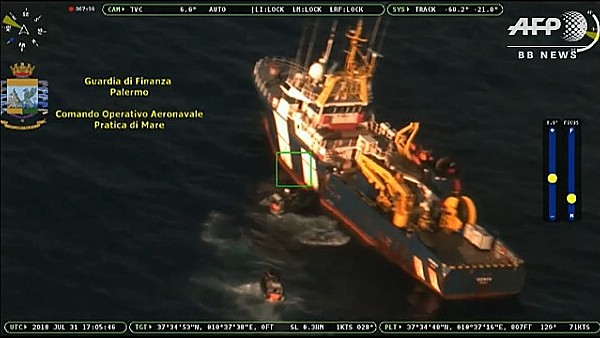
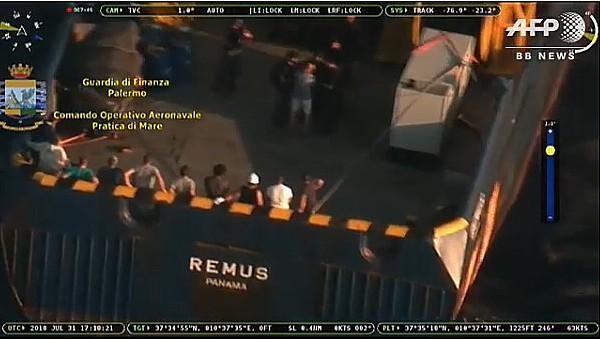
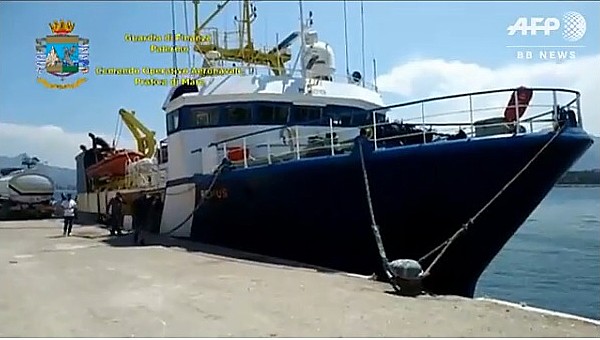
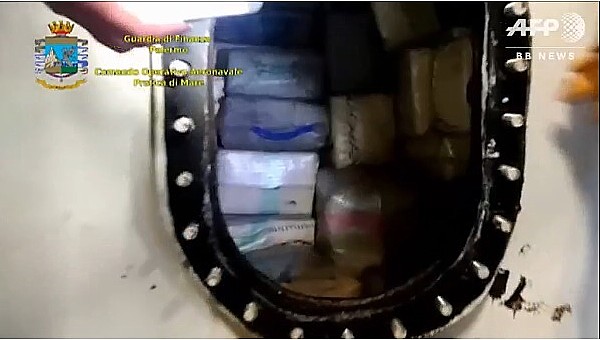
【8月10日 AFP】イタリア警察は9日、ハシシと呼ばれる大麻製品20トン以上を救助船の燃料タンクに隠したとして、モンテネグロ人11人の身柄を拘束したと発表した。見つかったハシシは約2億ユーロ(約256億円)相当。
映像後半は、伊パレルモ(Palermo)の港に停泊した救助船で行われた、金融犯罪を扱う財務警察(Guardia di Finanza)によるハシシ押収。7月31日~8月1日撮影。
【ニューヨーク=上塚真由】国連安全保障理事会で、対北朝鮮の制裁決議の履行状況を監視し、制裁逃れを調べる北朝鮮制裁委員会の専門家パネルの年次報告書が15日、公表された。北朝鮮は、公海上で船から船へ石油精製品を移し替える「瀬取り」の手口を巧妙化させているほか、違法な金融取引や、内戦が続くシリアとの軍事協力を活発化させている実態も明らかになった。
▽国際的なブローカー
「北朝鮮は、国際的な石油供給網を駆使し、外国人と共謀、海外企業の登記や国際銀行システムを悪用して、直近の安保理決議も無視している」
292ページに及ぶ報告書の冒頭でこう指摘し、悪質な制裁逃れの実態を批判。とくに注目しているのは石油精製品などの密輸手段となっている「瀬取り」だ。
報告書では昨年10月以降の「瀬取り」の手口として、船名を偽装する▽北朝鮮の国旗を白く塗りつぶす▽夜間に行う▽位置や速度を他の船に電波で知らせる船舶自動識別装置(AIS)を切る-などがみられるとした。
また、「瀬取り」に使用された香港やパナマ籍の船舶などの背後には「台湾を拠点としたネットワーク」があると指摘。台湾の男がマーシャル諸島などで登記した会社を通じ、船舶を所有したりチャーターしたりしていた。また石油精製品の調達には、香港やシンガポールに登記がある企業が関わっていたとし、「国際的なブローカーのネットワークに加え、無意識のうちに加担している貿易会社や石油会社によって、数百万ドルの違法なビジネスが生み出されている」などと注意も呼びかけた。
▽活発な軍事取引
報告書では長年、軍事協力を行っているとされる北朝鮮とシリアの関係が強化されていることもうかがえた。
2016年11月に、北朝鮮の国防科学院の傘下にある弾道ミサイル開発の技術者グループがシリアを訪問。その他にも同年には2度にわたって北朝鮮の技術者らの訪問が確認され、シリアの軍事施設に宿泊したこともあったという。また、加盟国からの情報として、北朝鮮の技術者が、首都ダマスカスなどにある化学兵器やミサイル開発施設で活動を続けていることも報告された。
このほか北朝鮮は、12年から17年に貨物をシリアへ輸送する取り引きを40件以上行っていた。貨物の中には、化学兵器製造施設で使われることがある特殊なタイルが含まれていた。
▽金融取引も
金融制裁の分野でも制裁の「穴」が指摘された。
北朝鮮の金融機関の代表者30人超が中東やアジアを自由に行き来して、銀行口座を保持して、違法な金融取引を続けていると指摘。昨年は中国、リビア、ロシア、シリア、アラブ首長国連邦(UAE)での活動が確認されたという。
報告書では「北朝鮮の不正な活動や、加盟国の適切さを欠いた行動によって、金融制裁の効果が損なわれている」とし、加盟国に制裁の履行徹底を呼びかけた。
「北朝鮮籍の船舶など4隻を制裁対象に追加 国連安保理」
10/10 2017
http://www.fnn-news.com/news/headlines/articles/CONN00372957.html
上記の記事によると「国連安保理は、北朝鮮に対する制裁決議で禁止されている物品を運んでいたとして、5日付で、北朝鮮籍などの4隻の船舶に対して、国連加盟国の港に入港することを禁止する措置をとった。」とある。
北朝鮮に便宜置籍船で加担しているのはどれも小国である。
カンボジア(1600万)
コモロ連合(67万)
ベリーズ(32万)
パラオ(1万2千)
パナマ(4百万)
下記のThe Marine Executiveの記事が詳しい。
"U.N. Blacklists Four More North Korean Freighters"
http://maritime-executive.com/article/un-blacklists-four-more-north-korean-freighters
今回りストに上がったが、制裁対象とならなかった5隻の内3隻がパラオの旗。
- Kai Xiang, a Panama-flagged bulker
- East Glory (or East Glory 7), a Palau-flagged freighter
- Xin Sheng Hai, a Belize-flagged freighter
- Toyo Maru, a Palau-flagged freighter (formerly flagged in Fiji)
今回制裁対象になったのは下記の4隻
- Tong San 2, a North Korean-flagged freighter
- Hao Fan 6, a St. Kitts and Nevis-flagged bulker
- Petrel 8, a Comoros-flagged bulker
下記のロイターの記事も参考になる。
OCTOBER 11, 2017 /
"U.N. bans four ships over North Korea coal, U.S. delays four more"
Michelle Nichols
https://www.reuters.com/article/us-northkorea-missiles-un/u-n-bans-four-ships-over-north-korea-coal-u-s-delays-four-more-idUSKBN1CF2MV
【ソウル=峯岸博】韓国の聯合ニュースは31日、北朝鮮の船舶に石油精製品を移し替えた疑いのあるパナマ船籍の石油タンカーを韓国当局が検査していると報じた。韓国西部の唐津港に留め置かれており、船員の大半が中国人とミャンマー人だという。
国連安全保障理事会は北朝鮮の核・ミサイル開発を封じ込めるため、石油精製品の輸出を規制する制裁を採択した。今回の船舶間の移し替えが事実なら、制裁逃れの韓国政府による確認は29日に発覚した香港籍の貨物船に続き2例目。
聯合ニュースは31日、北朝鮮の船舶に石油精製品を移し替えた疑いのあるパナマ船籍の運搬船を、韓国西部の港で当局が調べていると伝えた。事実なら、韓国政府による北朝鮮船への移し替え確認は、南部の麗水港で検査した香港船籍の貨物船「ライトハウス・ウィンモア」に次ぎ2例目となる。
聯合によると、韓国当局は「北朝鮮との関連が疑われる船舶」としてパナマ船籍の「KOTI」号を調べている。船員の大部分は中国人やミャンマー人。出港を許可せず、調査には関税庁や情報機関の国家情報院が当たっているという。
国連安全保障理事会は9月、海上で北朝鮮の船に積み荷を移すことを禁止する制裁決議を採択した。しかし、既に韓国が確認した香港船籍の貨物船のほか、ロシア船籍の複数のタンカーも過去数カ月間に北朝鮮の船舶に石油精製品を移し替えたとの報道もある。(共同)
【ソウル聯合ニュース】北朝鮮船舶に石油精製品を移し替えた疑いで、パナマ船籍の石油タンカー「KOTI」号(5100トン)が韓国西部の平沢・唐津港で関税庁など関連機関の検査を受けていることが31日分かった。平沢地方海洋水産庁が明らかにした。
乗船していたのは中国人とミャンマー人が大部分で、関税庁と情報機関・国家情報院が合同で調べを進めているもようだ。
韓国政府は29日にも、香港籍の船「ライトハウス・ウィンモア」号が10月に公海上で石油精製品600トンを北朝鮮船舶に移し替えたことを確認したと発表した。11月に韓国南部・麗水に寄港した同船は検査を受け、抑留されている。
国連安全保障理事会は9月、海上で北朝鮮船舶へ積み荷を移すことを禁止する制裁決議を採択している。パナマ籍の船の嫌疑が確認されれば、この制裁決議への違反で韓国当局が船舶を摘発するのは2度目となる。
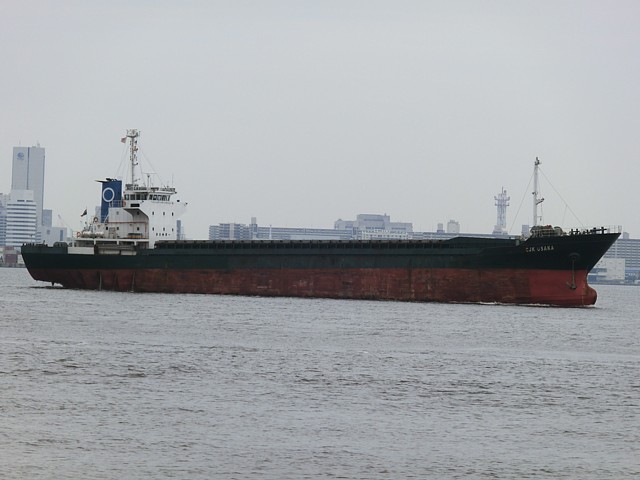
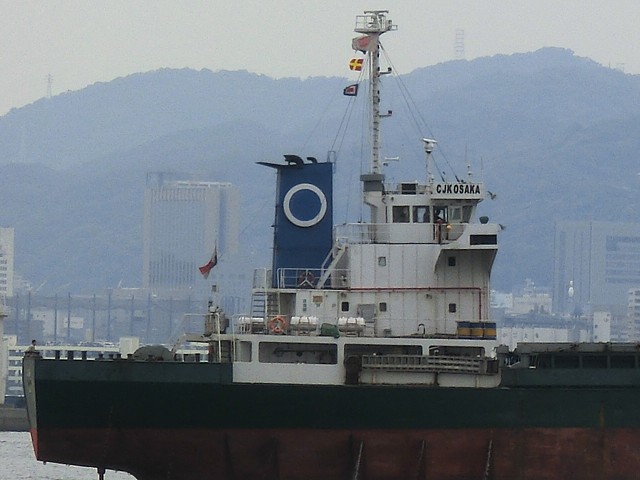
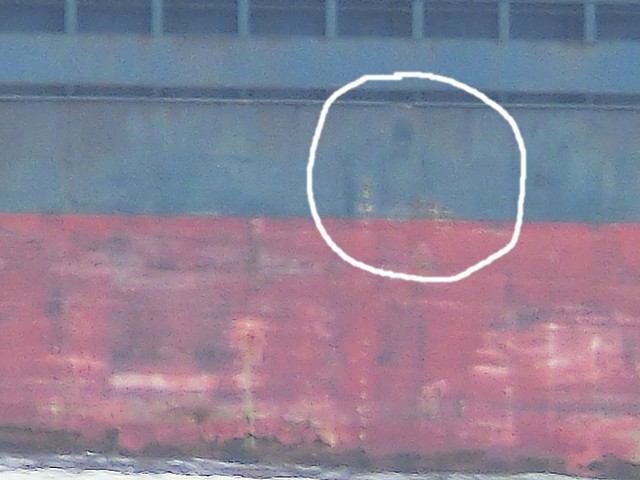
| From(Maritime Connector.com) | |
|---|---|
| Ship Name: | CJK OSAKA |
| IMO: | 9016430 |
| Flag: | PANAMA |
| MMSI: | 353308000 |
| Call Sign: | 355823000 |
| Gross tonnage: | 2576 tons |
| Year of Built: | 1991 |
| Builder: | MIURA SHIPBUILDING - SAIKI, JAPAN |
| Class Society: | INTERNATIONAL REGISTER OF SHIPPING |
| Manager & Owner: | YUHAI SHIPPING - HONG KONG, CHINA |
| Former names: | JINYA MARU NO.8 until 2004 Dec |
MAO FENG 8 IMO 8743579, Built 2009 by Anhui Chaohu Shipyard Chaohu, China (ShipSpotting.com)
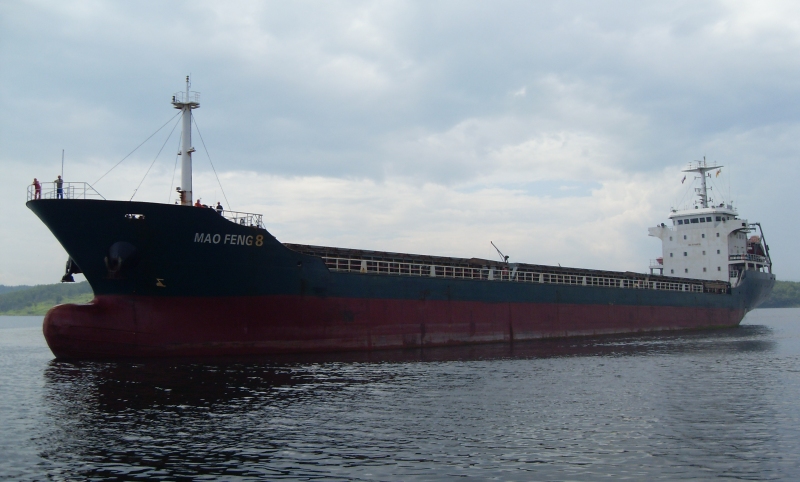
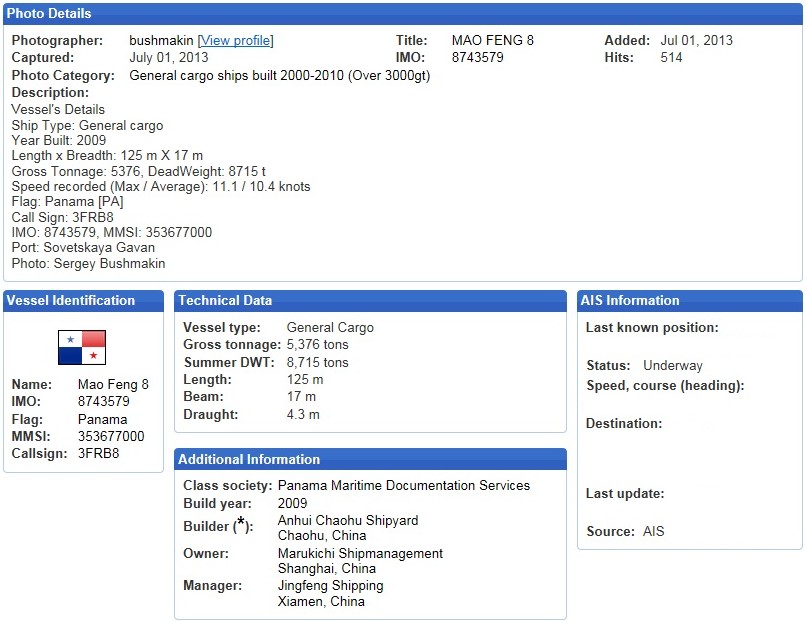
こんなタンカーが日本で油汚染を起こせば、何十億から何百億の被害は出るであろう。規則は厳しくなるのに、こんな抜け道が存在する。 個人的な経験では、検査会社(Overseas Marine Certification Services)にこのような大型タンカーを検査出来る能力や検査会は存在しないと思う。 タンカーの船齢は25年。手入れが悪ければ何があっても不思議ではない。
しかし、でたらめな検査を行ったとの理由で検査が出来なくなった検査会社は少ない。例え、検査できなくなってもまともな検査を行わないぐらいの会社で あるので何でもやる。名前を変えて、再出発するだけ。この事を知っているPSC(外国船舶監督官)は何人いるのだろうか?
税金で外国船が引き起こす海難の尻拭いだけはやめてほしい。問題がある外国船が入港出来ないようにPSC(外国船舶監督官) はしっかりと検査するべき。甘い検査をしているから、三流の検査会社が調子に乗って何でもやるのである。
SEA LANDSORT (EX-KAMARI I)IMO8919154, Classification: Overseas Marine Certification Services, Manager: WAVES SHIPPING LINE FZE TOKYO MOUのサイト
三流の検査会社が検査し、証書を発給するパナマ船籍船が最近大型化している。 昔は、小型船ばかりであった。小型船が海難を起こしても、大型船と比べれば油汚染を含む被害など小さい。日本で 三流の検査会社が検査し、証書を発給するパナマ船籍船でこれほど大きい船が海難を起こしたことは無い。 起こしていないと言うよりは存在しなかった。もしこのような大型船が油汚染を起こせば保険会社が対応するのか、保険が下りない状態で運航されることにより、 保険が対応しないリスクがある。
Hw Global IMO 8914037 Flag: Panama built: 1990(ShipSpotting.com)
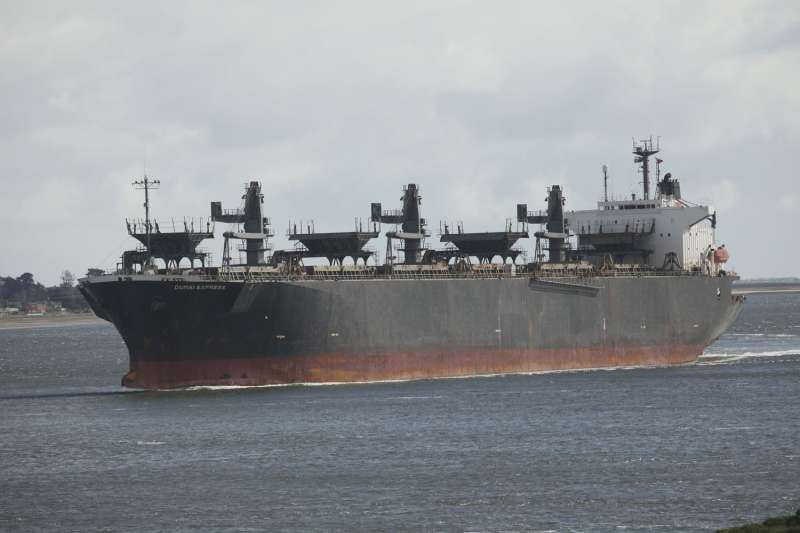
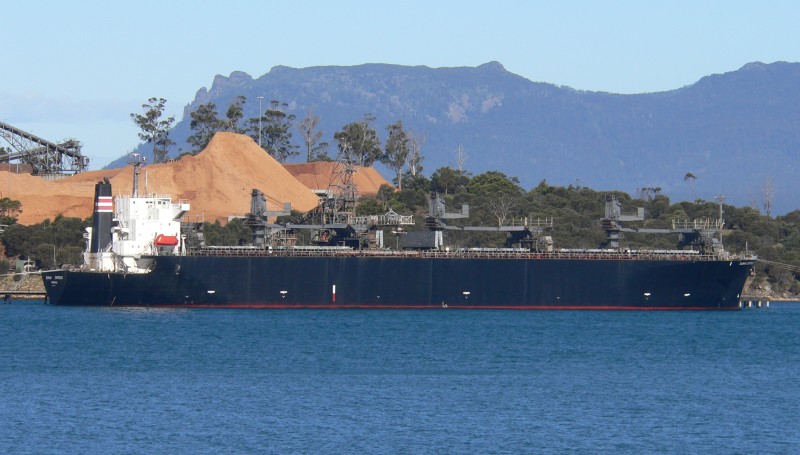
Lucky Future IMO 8822260 Flag: Panama built: 1989(ShipSpotting.com)
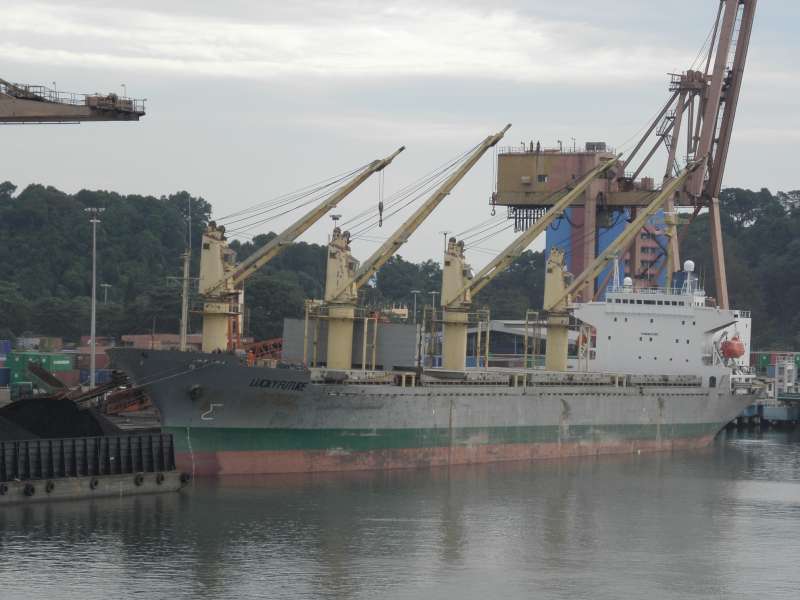
例としては下記の死亡事故であろう。
係留作業の中国男性死亡 千葉・船橋港 01/14/12(産経新聞)
11日午前8時ごろ、千葉県船橋市の船橋港の岸壁で、パナマ船籍の貨物船グアンダ(2460トン、12人乗り組み)の乗組員の中国人男性(58)が、係留作業中に負傷したと船舶代理店から通報があった。男性は救急搬送されたが、腰付近を強く打っており、約2時間後に死亡した。 千葉海上保安部によると、係留ロープをつなぐ船首の柱が折れており、破片やロープが甲板にいた男性に当たった可能性がある。海保は安全管理の状況などを調べる。 貨物船は金属スクラップを積み込むため入港。事故は午前6時半ごろに起きたとみられる。
貨物船GUANG DA乗組員死亡 01/11/12(運輸安全委員会)
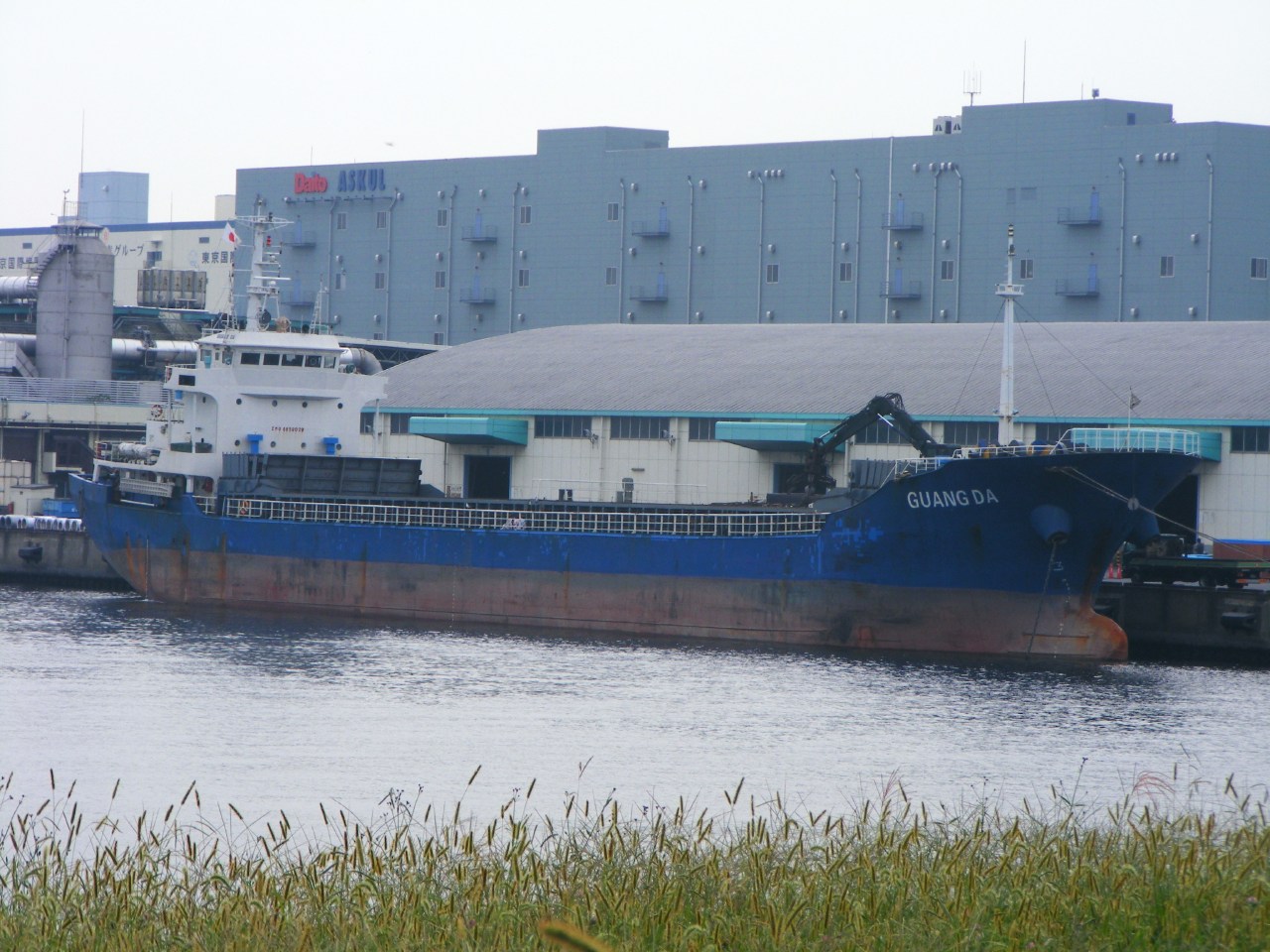
日本総トン数(G/T:495T)のガット船が国際総トン数2460トンとなる大改造が行われている。 F'cleも新設され、ウィンドラスも移設されている はずである。日本籍内航ガット船はエンジン馬力をごまかしているケースが多いので、売船後、外国籍に登録されて 引き伸ばしの改造が行われることが多い。ウィンドラスが移設されているのでホースパイプの位置も変わっているはずである。 上記の写真では確認できないが、 貨物船GUANG DA乗組員死亡 01/11/12(運輸安全委員会) で運輸安全委員会が調査中となっているが、担当者にしかわからないが、多分ウィンドラス移設とホースパイプの位置が変わっていることに 気づくだろう。元内航船なので運輸安全委員会の担当者は改造前と改造後の違いが頭が痛くなるほどよくわかると思う。
|
| |
|---|---|
| Ship Name: | GUANG DA |
| EX NAME: | 二十三号晃和丸 (KOWA MARU NO.23 until 2008 May) |
| IMO: | 8859029 |
| Flag: | PANAMA |
| MMSI: | 355823000 |
| Call Sign: | 355823000 |
| Gross tonnage: | 2460 tons (Japan G/T: 495T) |
| Year of Built: | 1991 |
| Builder: | 長島造船 |
| Class Society: | ISTHMUS BUREAU OF SHIPPING |
| Manager: | HK LIWEIDA SHIPPING MANAGEMENT - HONG KONG, CHINA |
| Owner: | JINYUN SHIPPING CO.,LTD |
便宜置籍船(「キャプテンカタヨセの肩ふり談話室」片寄 洋一)
Flag of convenience (便宜置籍船)(Wikipedia)
What are Flags of Convenience? (便宜置籍船)(ITF)
Posted on April 25, 2011 by Jim Walker
A reader of Cruise Law News (CLN) brought an excellent opinion piece from the New York Times regarding the shipping industry's use of "flags of convenience" to my attention. Entitled "Flying the Flag, Fleeing the State" and written by Rose George, the article explains how unscrupulous ship owners evade responsibility for environmental damage, exploitative labor and unsafe work conditions, and criminal behavior.
The article reveals that ships used to fly the flags of their nation which protected the seafarers and passengers and punished the shipping companies when they broke the law. But this changed when American flagged ships began flying the flags of foreign countries in order in order to avoid U.S. laws and government oversight. The "foreign registries" were in countries with no government oversight and no real connection to the vessel or its owners in the first place, like Panama (flag above left), Liberia, North Korea and even landlocked Mongolia. The registries often fail to monitor the safety and working conditions on ships or investigate accidents.
What are the real consequences to employees working on foreign flagged ships?
The New York Times article points out that there is a "human cost" which includes long hours, punishing work, and little rest; some international regulations permit 98-hour work weeks. Cruise line employees are a good example. Stateroom attendants and cleaners work a minimum of 12 hours a day and often are pushed to 14 to 16 hours when required to handle luggage on embarkation days, ending up with a 90 plus hour work week and no days off. Cruise ship cleaners earn a maximum of $545 a month working a minimum of 360 hours a month. Repetitive injuries to these crew members frequently occur, and just as frequently the cruise lines abandon them in countries like Nicaragua or India with inadequate medical care.
No foreign registry in Liberia, which often rages in civil war itself, gives a damn about the working conditions which men and women from Nicaragua or India face daily on Liberian flagged cruise ships.
Because most ship employees are non U.S. citizens, the U.S. public has been indifferent to their plight. But the problem inherent in flags of convenience came home to the U.S. last year when the offshore Deepwater Horizon oil rig exploded and 11 American oil and gas workers perished.
The U.S. Coast Guard just released a preliminary report about the Deepwater Horizon oil rig. The Coast Guard criticized not only rig owner, Transocean, but the foreign registry in the Marshall Islands (flag below) where Transocean registered the rig. Just like a cruise ship, the Deepwater Horizon oil rig was considered to be a vessel which had to be registered.
Why did the rig owners decide to go all of the way to an island in the Pacific to register its oil rig, you may ask? For the same reason cruise lines like Carnival and Royal Caribbean went to South America and Africa to register their cruise ships in Panama and Liberia - to avoid U.S. taxes, U.S. safety regulations, and U.S. labor laws.
One of the the Coast Guard's initial conclusions is that the Marshall Islands "abdicated" its safety responsibilities. Transocean got just what it wanted - lax safety inspections and substandard safety requirements from the little spec of an island in the Pacific. The owners enjoyed lower operating costs in addition to the substantial tax benefits of flying a flag of convenience. But the financial benefits came at the expense of poor training, poorly maintained equipment, and even poorer safety procedures which resulted in inoperable alarms and failed shut-down systems.
The ultimate result of the Marshall Islands flag of convenience? 11 dead men. And 11 families consumed with grief and suffering.
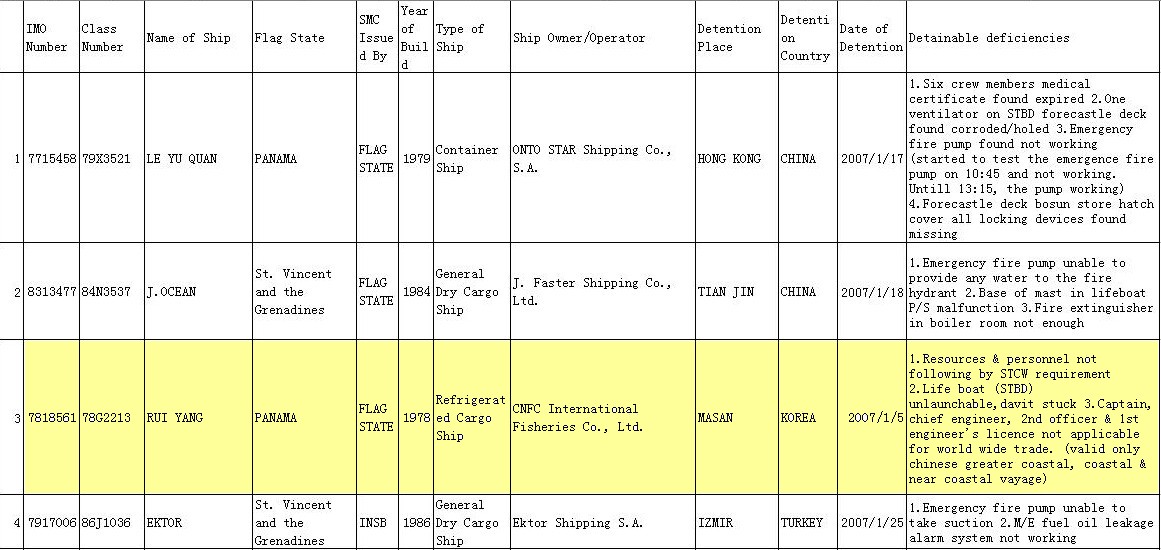
ハウステンボスの子会社が、本年2月就航させた客船オーシャンローズ号による「上海航路」、日本の法律が適用されない公海上に限定して、客船内でカジノ営業が開始された。
上海航路は、ハウステンボスの子会社が2月29日から長崎と上海間で就航させたもの。もともと、上海からハウステンボスに集客するため運航を開始。 しかし、料金が安いにもかかわらず、乗船客が低調に推移したため休航、約2ヶ月間かけ、船舶をカジノ仕様に改装していた。(中国の経済不況や福島原発での 水爆の影響もあり)
7月25日運航を再開、上海へ向け長崎港を出航した。今回の航路から、カジノ営業のほか、長旅を楽しめるショーなどの娯楽も提供している。
カジノ営業は、国内では禁止されているが、上海航路の船籍は、カジノが認められているパナマ船籍、また、営業は、日本の法律が適用されない公海上に限定して行われ、法務省でも、法律上まったく問題ないとしているという。
このカジノは、海外企業が運営、この企業から、パナマにあるハウステンボスの関連会社に、テナント料が支払われる。
ハウステンボスの澤田社長は、上海航路を計画した段階から、公海上のカジノ営業を打ち出しており、用意周到にカジノ営業を実現したものと思われる。
しかし、カジノには、ショーと酒とオンナが付きモノ、最後のモノはどうするのであろうか。
<日本でもカジノの門戸を開いたH.I.S.澤田会長>
今回、法務省が、公海上といえども実質日本の会社が運航する船舶上で、カジノを許可したことから、外国船籍のカジノ専用船舶(なければ造る)を、日本沖合44キロ(1,852m×24海里=接続海域外)以上の公海に浮かべ(停泊)、ショーと酒とオンナ(またはオトコ)付きのカジノが可能となる。オンナは、自由恋愛志望の女性を船内クラブに配置すれば何も問題なかろう。
カジノ経営は、パナマでカジノ許可を持つ会社とタッグを組むか、小さな許可を持つ会社を買収するか、パナマで会社設立してカジノ許可を取るか。
キーポイントは、公海上、外国船籍、日本にはないカジノの営業許可を持つ業者がカジノを運営することだけのようだ。
日本でのパチンコやスロットも換金できるという点ではカジノ(=洋風バクチ)そのものであり、パチンコは良くて、カジノは駄目という理屈は通らない。大きな利権が渦巻くこれまでの既得権者保護行政は如何なものかと思われる。イロイロな規制をかけ、その対応に天下り団体を作るという利権構造問題だけはどうしても納得できない。天下り撲滅を。
パナマ船籍船:パナマ船籍にすると、税金等の船舶にかかる費用が安く済む(固定資産税)。パナマは、簡単にペーパーカンパニーを作ることができる。船員は乗船する船舶の国籍の海技免状が必要であるが、パナマの海技免状は、簡単に取得できる。
ということで、実質日本船でも船籍をパナマ船籍にしている便宜置籍船所有の大手海運会社(日本+外国)が殆どである。
同じような船舶のタックスヘブン国としては、アフリカのリベリアが上げられる。
領 海 :12海里(1海里=1,852m) 約22km
接続海域:24海里 約44km
排他的経済水域:200海里 約370km
Panama, a small nation of just three million, has the largest shipping fleet in the world, greater than those of the US and China combined. Aliyya Swaby investigates how this tiny Central American country came to rule the waves.
Thanks to its location and slender shape, Panama enjoys a position as the guardian of one of the world's most important marine trade routes, which connects the Pacific and Atlantic oceans.
For a hundred years the Panama Canal has provided a short cut for ships wishing to avoid the more hazardous route via Cape Horn.
Dubbed one of the seven wonders of the modern world, the 77km (48-mile) canal is a feat of engineering that handles 14,000 ships every year along its intricate lock system.
Many of these vessels fly the Panamanian flag yet the country itself has a limited history of trade.
Panama only has one small shipping line as well as a number of companies providing supplementary maritime services around the ports and canal.
Cheaper foreign labour
Most merchant ships flying Panama's flag belong to foreign owners wishing to avoid the stricter marine regulations imposed by their own countries.
Panama operates what is known as an open registry. Its flag offers the advantages of easier registration (often online) and the ability to employ cheaper foreign labour. Furthermore the foreign owners pay no income taxes.
About 8,600 ships fly the Panamanian flag. By comparison, the US has around 3,400 registered vessels and China just over 3,700.
Under international law, every merchant ship must be registered with a country, known as its flag state.
That country has jurisdiction over the vessel and is responsible for inspecting that it is safe to sail and to check on the crew's working conditions.
Open registries, sometimes referred to pejoratively as flags of convenience, have been contentious from the start.
The first transfer of ships to Panama's register in 1922 involved two US passenger ships wishing to serve alcohol to passengers during Prohibition. More followed as shipowners sought to avoid higher wages and improved working conditions secured through US legislation.
After World War Two, Panama's registry grew more rapidly as US shipowners sought to lower overheads while European ones switched flags to avoid high tax rates.
As demand rose for open registration, other countries in the developing world formed their own. The US used Liberia's registry to build a fleet of neutral ships during the Cold War.
Panama now has the largest registry in the world, followed by Liberia, the Marshall Islands, Hong Kong and Singapore. By last year, almost three quarters of the world's fleet was registered under a flag of a country other than its own.
The registry is lucrative for Panama, bringing in half a billion dollars for the economy in fees, services and taxes.
However, critics of the system point to the ease of hiding the true identity of shipowners and the lax enforcement of rules and regulations.
Allegations of corruption
Luis Fruto, representative of the International Transport Workers' Federation (ITF) in Panama, says the country turns a blind eye to its "responsibilities in order to acquire higher registration".
The ITF has led a campaign against flags of convenience since 1958. It considers that Panamanian registration is better than some "from a safety viewpoint, but it remains seriously flawed in areas such as oversight, accident investigation and crew assistance".
Two years ago, Mr Fruto investigated the death of a woman sailor, 22, on her first voyage. She became trapped in machinery that was reportedly faulty and died.
The ITF says that, rather than heading for the nearest port as rules dictate, the ship continued to sail for more than two weeks with her body in a freezer.
Further investigation by the ITF suggested that some of the shipping certificates had been bought.
International legal requirements insist that countries operating open registries inspect vessels, comply with international regulations and investigate accidents and corruption.
But critics say that Panama cuts corners in all these tasks, putting maritime workers at risk.
Indeed, accidents involving Panamanian-registered ships are high.
However, Carlos Gonzalez, former executive secretary of the Panamanian Maritime Authority, attributes this to a numbers game.
Panama has the most ships and therefore the most incidents, he says.
Since 2008, Panama has cut down on enough offences to move up from the black to the white list of the Paris Memorandum of Understanding, a watchdog comprising 27 maritime administrations from Europe and North America.
Yet Panama's registry is consistently beset by allegations of corruption.
'Scandal'
In 2000, ITF general secretary David Cockroft was able to buy a Panamanian first officer's certificate for $4,000 to navigate a ship - even though he had no maritime skills or experience.
Despite repeated assurances that the country was cleaning up its act, Roberto Linares, the head of the Panama Maritime Authority, resigned in June after it was discovered that workers were being certified without the proper qualifications.
"The scandal brings us back to the days that Panama was called a 'convenience flag'," said Franklin Castrellon, former spokesman for the Panama Canal Commission, an independent agency operating the waterway until the country took over from the US in 1999.
New leadership plans to turn things around again.
Jorge Barakat, the new head of the maritime authority, said: "The Panamanian flag is still robust and secure. Whatever kind of non-compliance there is will be reviewed by the administration."
As a commercial venture, Panama's flag of convenience is a success. But according to the ITF, that comes at a cost.
'Distorted the market'
It believes the world economy could survive a ban on flags of convenience and the higher costs that it says would follow.
ITF secretary Jon Whitlow said: "There would be some reconfiguration. The positive effects would include better protections and safeguards for seafarers who found themselves once again serving on a national flag ship."
Shipping prices would rise, but free competition has extensively distorted the market, he says.
However, defenders of the system say this thinking is outdated and that flags of convenience are here to stay.
"Panama's registry will last for ever," said Jorge Luis Sanchez, professor at the International Maritime University of Panama. "Those who don't like the open registry can opt to do something else with their ships."
Jazmina Rovi, former director of the Panama Maritime Law Association, said unions are better off enforcing uniform standards than eliminating the registry altogether.
With the new maritime administrator sworn in last month, it remains to be seen whether Panama will crack down on corruption and safety breaches or continue to live with the taint that still clings to flags of convenience.
H.W. Wefers Bettink
https://doi.org/10.1017/S0167676800001689 Published online: 01 July 2009
(CAMBRIDGE UNIVERSITY PRESS)
References
3. Boczek, B.A., Flags of Convenience. An International Legal Study (1962) p. 9 Google Scholar, mentions the transfer of two cruise ships in 1922 from the American to the Panamanian register, to evade the prohibition on selling or transporting alcoholic beverages on board American-owned vessels. R. Carlisle, who in his Sovereignty for Sale (1981) makes a historical analysis of open registries, demonstrates at p. 17 that the real motives were the possibility of saving on crew costs and to evade burdensome inspection regulations. Similar reasons were given by the buyer of six freighters which the US Government had confiscated from the Central Powers during World War I, when these were transferred to a Panamanian registry in 1922, ibid., pp. 9–11.
4. Amendments to the Neutrality Act of November 1939 prohibited American ships from entering war zones, i.e., the East Atlantic. Registration in Panama enabled American companies to evade this prohibition and to keep their ships in a trading position with the United Kingdom and Western Europe, Carlisle, op.cit. n. 3, p. 71 et seq.
5. Liberia had a special relationship with the US as it had been founded in 1822 on the West Coast of Africa by liberated American slaves. The Liberian register was set up by former US Secretary of State Edward Stettinius Jr., in response to requests from American shipowners looking for an alternative to Panamanian registration. As Carlisle explains his initiative was partly philanthropic, partly commercial. Under an agreement with the Liberian Government he set up the Liberia Company to implement plans for Liberia's development: Carlisle, op.cit. n.3, p. 115 et seq. Profits were to be shared with the Liberian Government. Stettinius was to set up the International Trust Company in New York, to handle the registration of ships. It was kept separate from the Liberia Company and was purchased by the International Bank of Washington in 1954. See also Boczek, op.cit. n. 3, p. 13.
下記の問題も 欠陥船(サブスタンダード船) の排除のためには解決されなければならない。
確認は書類でのみ確認:
船籍国と船級協会 合田 浩之 (一般財団法人 山縣記念財団)
掃除をしていてThe Asahi Shinbun Globe January 15 - February4, 2012を見つけ、「日本海運支える『愛媛船主』生き残りかけた正念場に」を読んだ。
 ★ベリーズ籍船
以前はかなり悪くなったが、カンボジア籍船にかなりひどい
サブスタンダード船が移り改善していた。しかし、カンボジア籍船がマーケットから隠れ蓑として消えたので、サブスタンダード船の
隠れ蓑としてランクアップ中。
★ベリーズ籍船
以前はかなり悪くなったが、カンボジア籍船にかなりひどい
サブスタンダード船が移り改善していた。しかし、カンボジア籍船がマーケットから隠れ蓑として消えたので、サブスタンダード船の
隠れ蓑としてランクアップ中。
 ★カンボジア籍船
:以前はホンジュラスやベリーズが有名でした。現在は、質の悪い船/登録されている隻数
では世界で一番だと思います。
★カンボジア籍船
:以前はホンジュラスやベリーズが有名でした。現在は、質の悪い船/登録されている隻数
では世界で一番だと思います。
 ★モンゴル籍船
:カンボジアの後に出来ました。以前、カンボジア船を登録した会社が登録業をしている。
★モンゴル籍船
:カンボジアの後に出来ました。以前、カンボジア船を登録した会社が登録業をしている。
 ★ツバル籍船
:日本で問題と見られている国籍では、一番新しい。以前、カンボジア船を登録した会社が
登録業をしている。
★ツバル籍船
:日本で問題と見られている国籍では、一番新しい。以前、カンボジア船を登録した会社が
登録業をしている。
![]() ★グルジア籍船
:日本で出港停止命令を受けた船舶が増えた。ツバル籍船の次になるのか。
★グルジア籍船
:日本で出港停止命令を受けた船舶が増えた。ツバル籍船の次になるのか。
連絡先の情報については、
AMSA(オーストラリア)のHPを参考にしてください。
 ★シエラレオネ籍船: 北九州で大量の麻薬が見つかり、船主は行方不明になり船が放置された事件に認知度がアップ。また、東京・伊豆大島沖で2013年9月、丸仲海運が所有する貨物船「第18栄福丸」が中国企業所有のシエラレオネ籍船貨物船「JIA HUI」と衝突し、栄福丸の乗組員六人が死亡した事故でさらに注目を集める。
★シエラレオネ籍船: 北九州で大量の麻薬が見つかり、船主は行方不明になり船が放置された事件に認知度がアップ。また、東京・伊豆大島沖で2013年9月、丸仲海運が所有する貨物船「第18栄福丸」が中国企業所有のシエラレオネ籍船貨物船「JIA HUI」と衝突し、栄福丸の乗組員六人が死亡した事故でさらに注目を集める。
![]() ★トーゴ籍船:日本ではまだ少ない。
★トーゴ籍船:日本ではまだ少ない。
![]() ★パラオ籍船:日本でも見られるようになった。
★パラオ籍船:日本でも見られるようになった。
便宜置籍船とライドシェア 前国土交通政策研究所長 川西 徹 (国土交通省)
開けない人はここをクリック
|
◆サブスタンダード船
◆サブ・スタンダード船と旗国の関係 ◆なぜ、サブ・スタンダード船? ◆サブスタンダード船の見つけ方 ◆サブスタンダード船の写真 ◆検査会社の問題 |
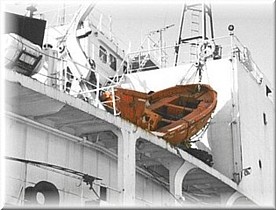 ★HOME |
◆海運関連業界
◆なぜ、サブ・スタンダード船? ◆BLUE OCEAN(ブルーオーシャン)の事故 ◆座礁船及び放置船 ◆PSCによる検査の現状 ◆船舶油濁損害賠償保障法 |
|---|
リンク先の中には繋がらないものもあると思いますが、ご容赦ください。
